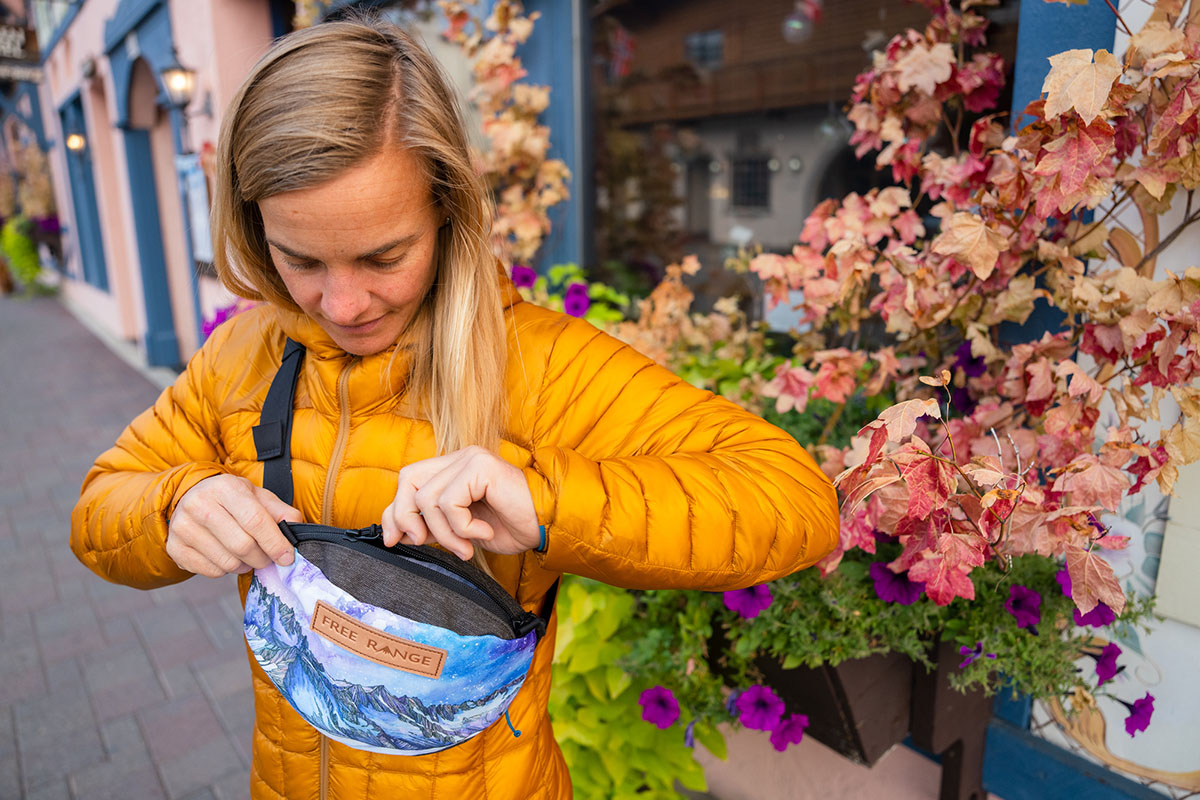
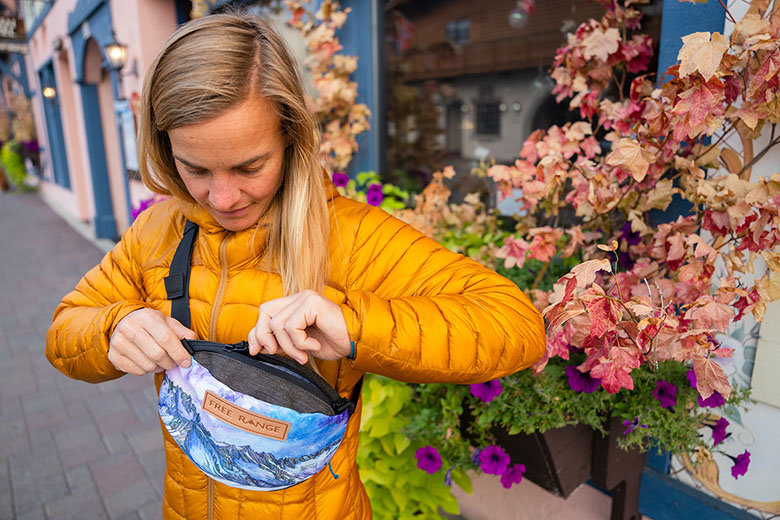
Switchback Travel (Jason Hummel)
Once considered an unfashionable fad of the '90s, fanny packs—also known as waist, lumbar, and hip packs—are making a serious comeback in 2024. From replacing a purse while running errands around town to keeping the essentials handy on the trail, many of today’s designs are impressively versatile and offer unmatched on-the-go access. We put several leading designs to the test on local trails, while traveling, and during our normal day-to-day to bring you our 17 favorites below. From stylish, everyday-friendly options to high-capacity and durable models built for hiking, our list covers the full gamut. For more background information, see our comparison table and buying advice below the picks.
Editor’s note: We updated our fanny packs guide on May 21, 2024, to add the CamelBak M.U.L.E. as our top hydration waist pack. We also included Thrupack’s ultralight Eco Summit Bum and outlined our testing practices below the picks.
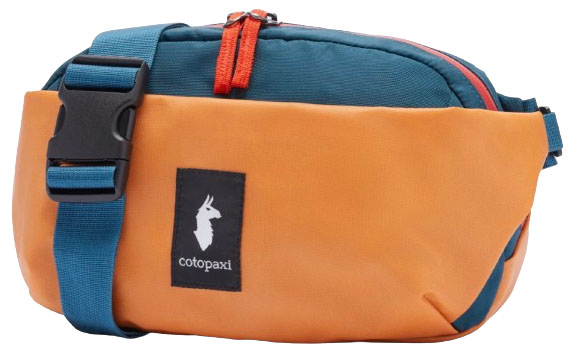 Pockets: 3
Pockets: 3
Capacity: 2L
Dimensions: 11 x 7 x 3 in.
Weight: 10.0 oz.
What we like: Great all-around versatility and modern styling in a sustainably built package.
What we don’t: A little big and bulky for everyday use; not the most urban-friendly design.
Fanny packs can serve a wide range of purposes, from replacing a purse to carrying the essentials on commutes or short day hikes. For all-around use, we love versatile designs like Cotopaxi’s Coso 2L Hip Pack. For starters, there’s plenty of space to divvy up must-have items and a few extras, the exterior is both durable and water-resistant, and the adjustable waist strap makes it easy to alternate between hip and cross-body carry. The storage layout is also very well executed, including a fleece-lined pocket on the inside for sunglasses or a phone, a zippered pocket at the back for keeping cash or documents handy but hidden, and a pouch-like space at the front that’s perfect for quickly stashing your phone or wallet while on the move (with another zippered pocket abutting the main compartment). Finally, as we’ve come to expect from Cotopaxi, the Coso is sustainably built with 100%-recycled nylon and has that playful, colorful styling that the brand is known for.
No fanny pack is perfect, however, and the Coso is no exception. While we’ve enjoyed the 2-liter capacity for day-to-day use, some may find it a little big and cumbersome. If you’re just looking to stash small necessities and a couple extras while running errands, Cotopaxi’s 1.5-liter Kapai will save you over $30 and 6 ounces in weight. The Coso has two additional pockets that make it easier to stay organized, and we like the water-resistant and easy-to-clean front pouch, but both packs boast the brand’s trademark multi-toned styling and strong sustainability slant. A final in-house alternative is Cotopaxi’s Bataan, which offers an additional liter of storage space for around $28 less than the Coso. However, the Bataan’s flexible build causes it to feel droopy and unwieldy when stuffed full, and the lack of organization is undeniably limiting. In our opinion, the Coso is the most well-rounded of the bunch and checks all the boxes for most daily wear, travel, and light outdoor use, earning it our top spot.
See the Cotopaxi Coso 2L Hip Pack
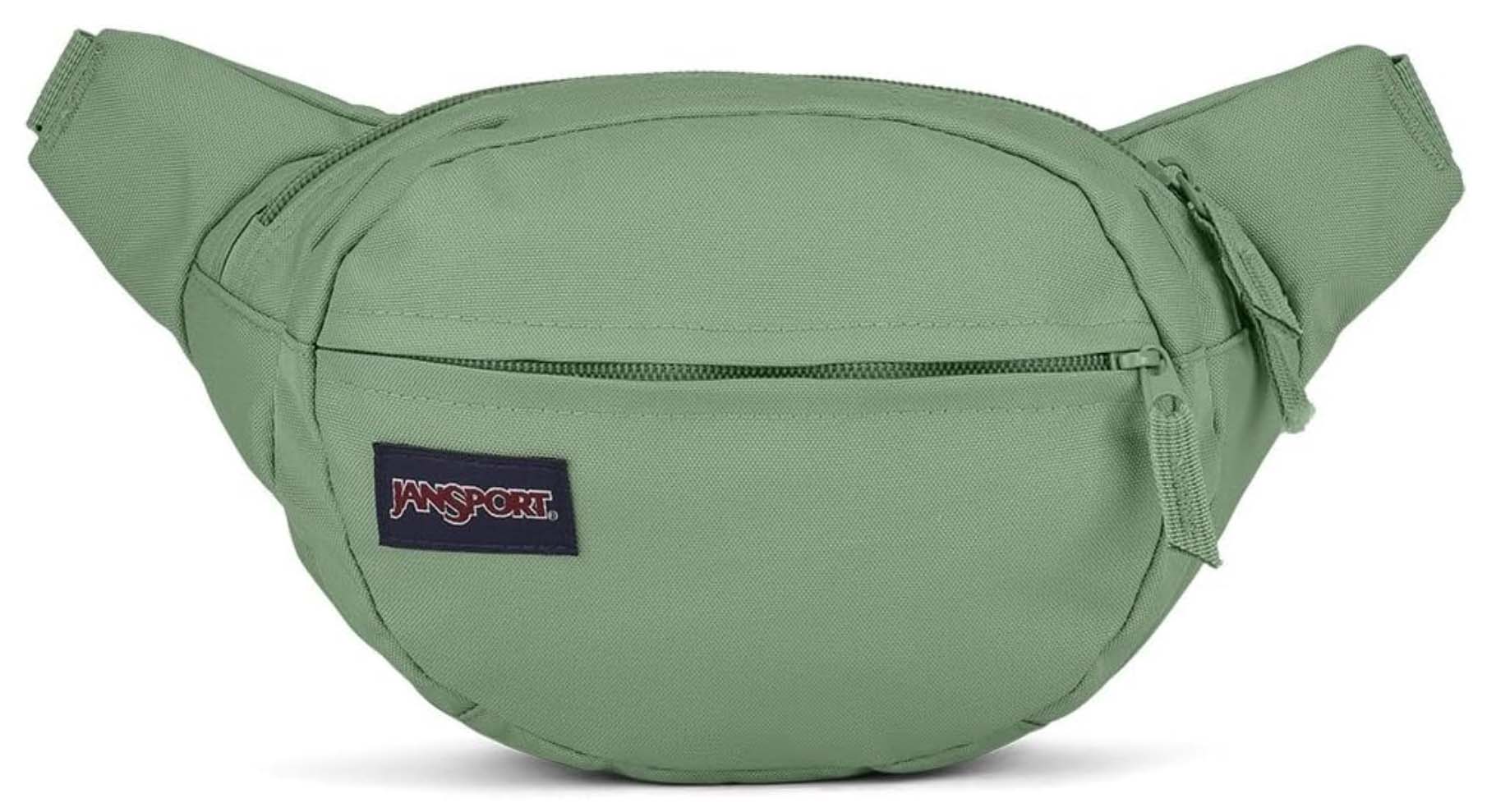 Pockets: 1
Pockets: 1
Capacity: 2.5L
Dimensions: 6 x 12.5 x 4 in.
Weight: 4.0 oz.
What we like: Cheap and offered in lots of fun colors.
What we don’t: Build quality lines up with the price; only one pocket.
Fanny packs inherently are a relatively cheap bunch, but we certainly understand wanting to save a few bucks wherever possible. If budget is at the top of your priority list, JanSport’s Fifth Avenue Fanny Pack checks most of the boxes for daily use at a wallet-friendly $20 (some colorways are even cheaper on Amazon). The design is decidedly basic with a pocket-free interior and single zippered pouch on the front, but the 2.5-liter capacity fits day-to-day essentials with room to spare. You don’t have to skimp on style, either: The Fifth Avenue is pretty low-profile and comes in a nice selection of bright colorways and fun patterns.
Who is the JanSport Fifth Avenue best for? Occasional users likely won’t mind the simplistic storage layout and lack of premium touches like a padded backpanel or ergonomic zipper pulls. It’s also a viable option for minimalists who just want a no-frills design for walking the dog or running quick errands around town. For outdoor use, however, it leaves a lot to be desired—even casual hikers will appreciate the bump in quality, durability, and organization that comes with stepping up to a design like Cotopaxi’s Coso above or Gregory’s Nano below. But if you’re just looking for a cheap but functional day-to-day waist pack that covers the basics, the Fifth Avenue is a fine choice.
See the JanSport Fifth Avenue
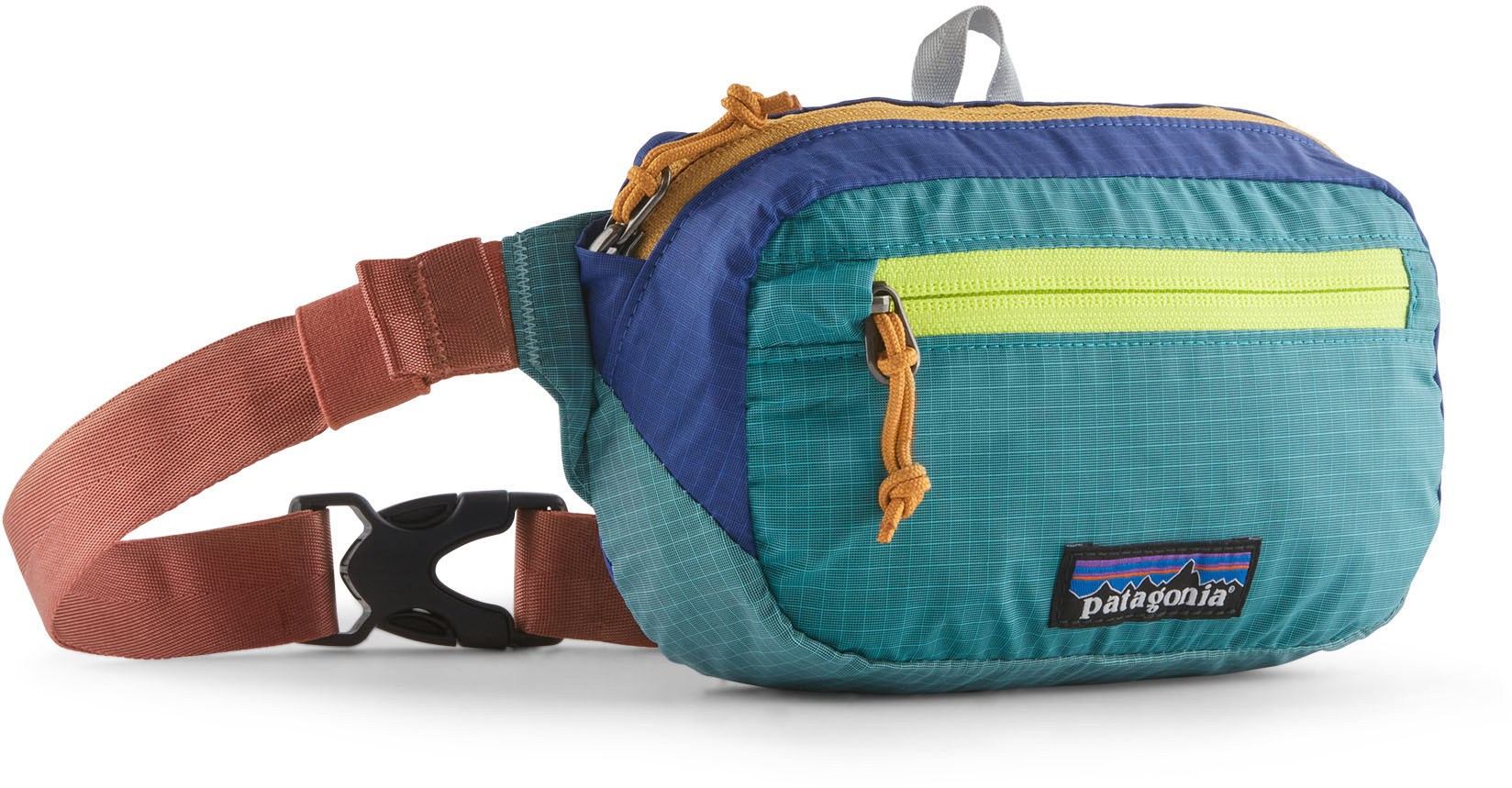 Pockets: 1
Pockets: 1
Capacity: 1L
Dimensions: 4.8 x 8 x 2 in.
Weight: 3.5 oz.
What we like: Light, packable, fun styling, and all most people need for daily use.
What we don’t: Limited capacity and organization; waist strap maxes out at 36 inches.
Most people don’t leave the house without their phone, wallet, and keys, and a streamlined design like Patagonia’s Ultralight Black Hole Mini is perfect for minimalists who just want to keep track of the essentials. At just 1 liter, the Black Hole is tied for the second-smallest design on our list (along with Lululemon’s Everywhere Belt Bag below) but packs a solid punch for its diminutive size. Highlights include a nicely sized zippered pocket at the front, soft padding along the backpanel, and silicone/PU coatings for added assurance in wet weather. The Black Hole Mini also stuffs down into its own pocket for storage, making it a no-brainer to throw in a duffel for travel or a backpack for short outings from camp. Finally, as we’ve come to expect from Patagonia, the Black Hole has a nice sustainability slant with recycled and bluesign-approved materials that are certified to the Fair Trade standard.
We love the Patagonia Ultralight Black Hole Mini as a substitute for a purse or carrying your phone and treats while walking the dog. It’s also low-profile enough to wear under a rain shell or insulated jacket and doesn’t bounce around too much on short runs or bike rides. But there’s no denying the Black Hole’s small size and limited organization—for anything more than a quick after-work jaunt or ride, you’ll almost certainly want something larger and with more pockets. For a small boost in capacity, Osprey’s Ultralight Stuff Waist Pack is similarly light (2.9 oz.) and packable with an additional liter of space. But the Black Hole Mini is all most people need for day-to-day use and nothing they don’t, and the retro styling is the cherry on top. Note: The Black Hole’s waist strap maxes out at 36 inches, which is less than many competitors and may not work for some.
See the Patagonia Ultralight Black Hole Mini
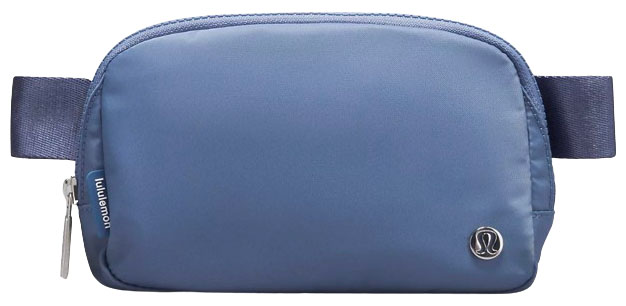 Pockets: 2
Pockets: 2
Capacities: 1, 2L
Dimensions: 7.5 x 2 x 5 in.
What we like: Everyday-friendly storage and comfort in a chic and modern package.
What we don’t: Lacking in outdoor appeal; some will prefer the 2-liter version.
Many of the picks here are made by outdoor brands and have a slightly technical look as a result, but athleisure giant Lululemon has filled a nice niche in the market with their Everywhere Belt Bag. Offered in 1- and 2-liter capacities (we’ve included the former here), this fanny pack is high on style with a sleek look, subdued branding, and classy colorway selection. We also like the thick, seatbelt-like strap that’s comfortable to wear all day and effectively keeps the bag in place while walking. The storage layout isn’t anything to write home about, but the small zippered pocket on the back, interior mesh divider, and generous opening to the main compartment (plus the big zipper) make organization and access quick and easy. In fact, one editor’s wife described it as “the ultimate everyday bag,” and we think the praise is well deserved.
The Lululemon Everywhere Belt Bag 1L is a more urban-friendly alternative to Patagonia’s Ultralight Black Hole Mini above and one of the closest purse substitutes on our list. In other words, it’s a great option for city dwellers and other fashion-forward shoppers who value the added on-the-go convenience but without the polarizing looks. Again, it’s important to take the storage constraints into account—those looking to carry more than just their phone, wallet, keys, and a couple small extras will likely want to step up to the 2-liter model for $10 more (the two packs are otherwise identical). Lululemon also offers the pack in a smaller, 0.7-liter version called the Everywhere Belt Bag Mini, although it won’t save you any cash over the 1-liter model here. Regardless of which capacity you choose, the Everywhere Belt Bag stands out as a very chic and trendy design that fits right in on city streets.
See the Lululemon Everywhere Belt Bag 1L
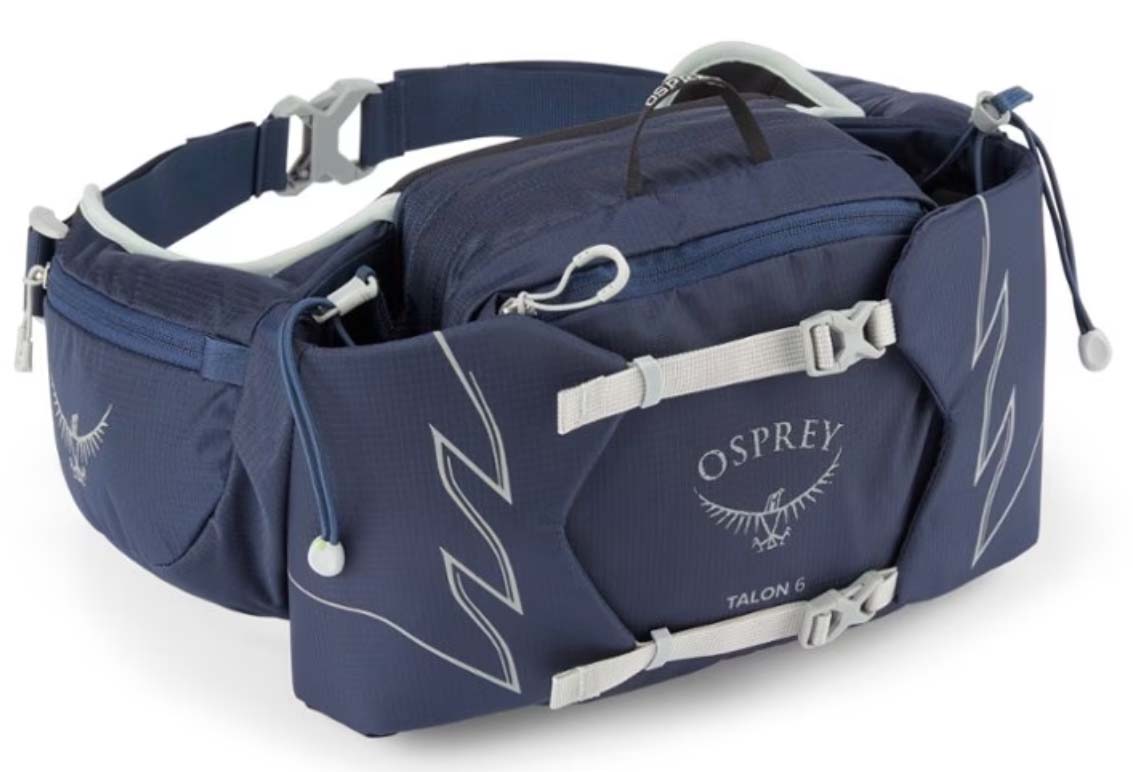 Pockets: 5
Pockets: 5
Capacity: 6L
Dimensions: 8.3 x 9.8 x 5.9 in.
Weight: 14.4 oz.
What we like: A well-executed take on Osprey’s popular daypack series.
What we don’t: Bulky, heavy, and overbuilt for most.
The options above are great for around-town and even light outdoor use, but hikers looking to replace their daypack will likely want to step up to a larger and more purpose-built design. Enter Osprey’s Talon 6, which takes design cues from their Talon daypack collection that’s been a favorite of ours for years. As expected from Osprey, carrying comfort is excellent thanks to the Talon 6’s cushy padding along the hipbelt, and the AirScape backpanel—shared with the daypacks—breathes well and provides great support and structure. Storage also abounds with two large hipbelt pockets, a generous zippered compartment at the front, dual water bottle sleeves (perfect for 16-oz. Nalgene bottles), and compression straps for securing a lightweight jacket. Finally, the Talon is well built with thick fabrics that will stand up to long-term outdoor use and is the only design here to be offered in a women’s-specific model (the Tempest 6).
The Osprey Talon 6 is a great choice for outings when you just want to carry water, a light layer, and snacks, but it’s far from a featherweight at 14.4 ounces. It does undercut the Talon 11—the smallest daypack in the collection—by around 14 ounces, but you can certainly go lighter with more streamlined daypacks like REI’s Flash 18 (9.5 oz.) or Cotopaxi’s Batac 16L (12 oz.). On a related note, the Talon 6 is decidedly bulky and can feel unwieldy when loaded down with heavier items like water and electronics (some users report lower back pain after long days on the trail). But if you pack strategically, the Talon stands out as one of the most well-executed hiking designs on the market and can easily substitute a daypack on most done-in-a-day adventures. For $15 less, it’s also worth checking out Black Diamond’s Pursuit 6, which shaves off 6.4 ounces and is noticeably lower-profile but with thinner padding and fewer features.
See the Osprey Talon 6 See the Women's Osprey Tempest 6
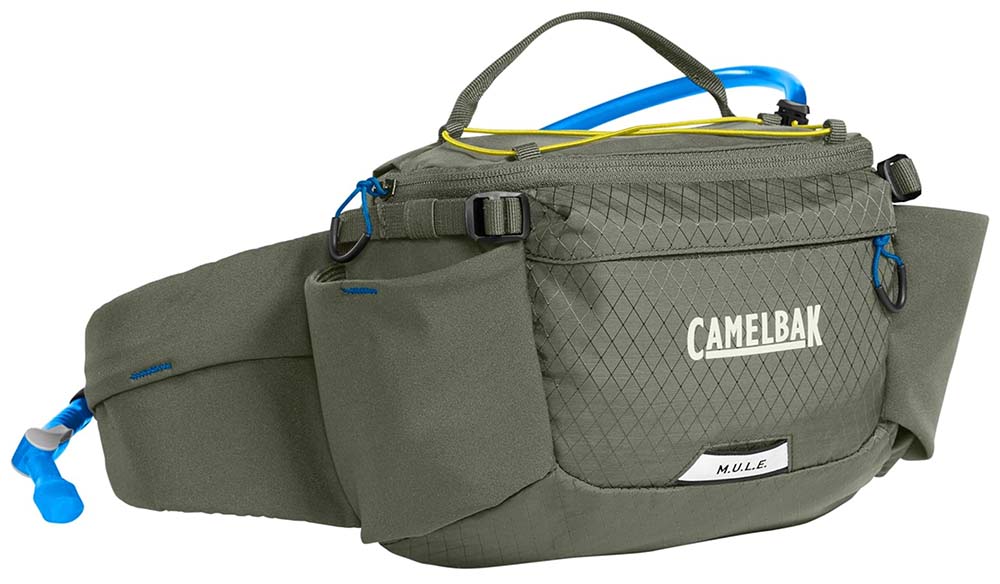 Pockets: 5
Pockets: 5
Capacity: 5L
Dimensions: 9.5 x 10.2 x 5.1 in.
Weight: 1 lb. 2 oz.
What we like: A hydration-equipped waist pack that can pull double duty for hiking and biking.
What we don’t: Like the Talon above, this is not a light or versatile pack.
If the idea of replacing your daypack with a fanny pack is enticing but you don’t want to sacrifice easy on-the-go hydration, a reservoir-equipped design could be just the ticket. Our favorite in this category is CamelBak’s M.U.L.E. 5, which is technically built for bikers but crosses over nicely for hiking. Like the Talon above, the CamelBak features a mesh-heavy backpanel to keep air flowing, a well-padded hipbelt that minimizes pressure points on long days out, and ample pockets for divvying up on-trail essentials—plus a handy bungee system at the top for securing a light layer. And arguably the biggest draw: The M.U.L.E. comes with a quality 1.5-liter Crux reservoir, which fits neatly against the back of the main compartment to minimize bounce, along with a magnet on the hose that keeps it out of the way. For all-day rides and long days on the trail, you also get water bottle pockets on either side of the main compartment.
What complaints do we have about the CamelBak M.U.L.E. 5? First and foremost is the lack of versatility: Like the Talon above, the M.U.L.E. is decidedly hefty and bulky, which severely limits overall appeal. It’s also on the pricier end at $90, although the included Crux reservoir is a $33 investment on its own (and the Talon above costs the same without a bladder, albeit with an additional liter of storage). Finally, the CamelBak’s interior capacity is smaller than its designation would suggest at 3.5 liters, and a full reservoir will take up a good chunk of that space, meaning there isn’t as much room for gear storage as you might expect. But again, on-trail comfort and the included reservoir are undeniable selling points, especially for those who split their time between hiking and biking.
See the CamelBak M.U.L.E. 5
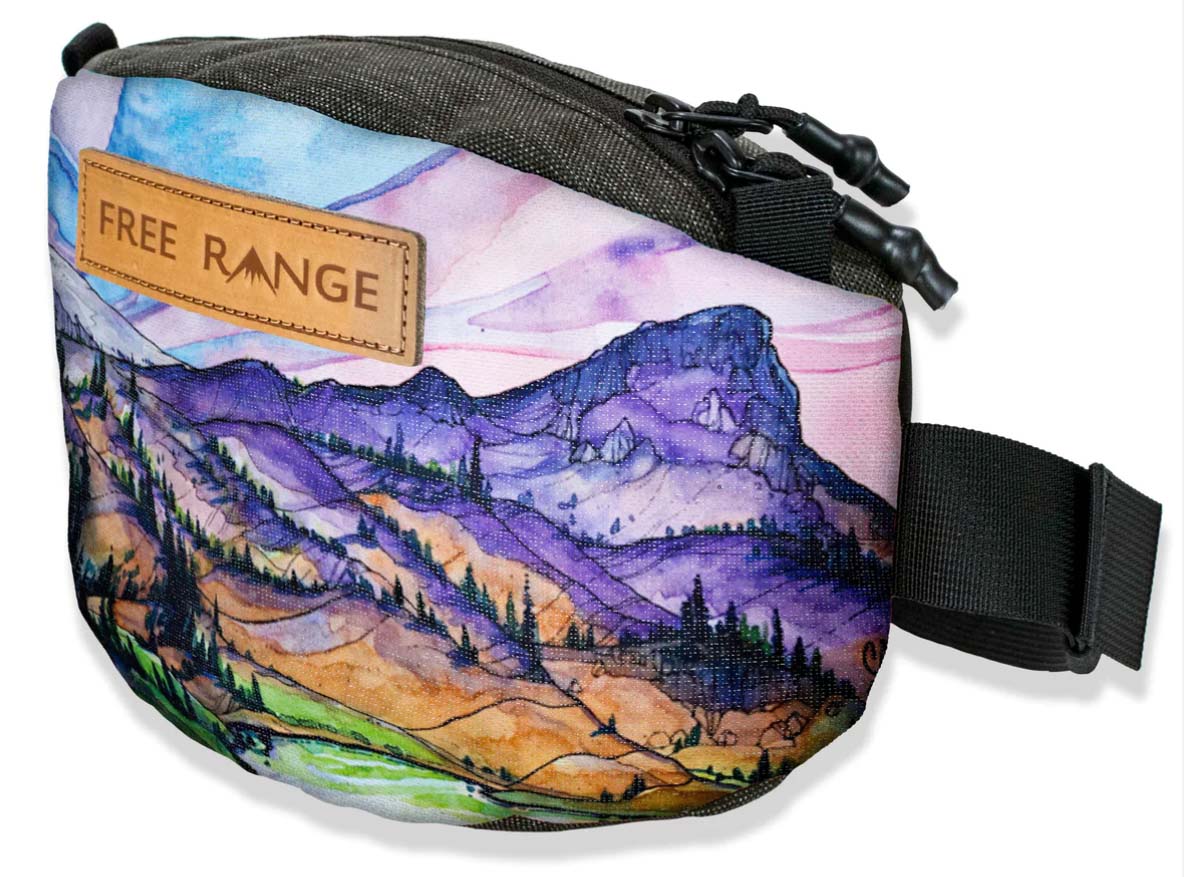 Pockets: 1
Pockets: 1
Capacity: 2L
Dimensions: 9.5 x 6 x 3.5 in.
Weight: 6.0 oz.
What we like: Beautiful art and premium craftsmanship.
What we don’t: Barebones feature set.
Style is largely subjective, but Free Range Equipment’s Canvas Phanny collection was quick to win us over. A small brand based out of Bend, Ore., FRE works with outdoor artists to create unique, outdoors-inspired designs—at the time of publishing, you can choose from a hopping 20 different styles including colorful mountain landscapes, wildlife-centric designs, and more. Overall quality is excellent thanks to the abrasion-resistant canvas exterior and premium touches like thick zipper pulls, a nicely padded backpanel, and a leather logo patch on the front. Two of our editors recently adopted the Canvas Phanny as their go-to waist pack, and we’ve found it useful for everything from running errands around town to shuttling the essentials —including a 500-milliliter soft flask, phone, snacks, a headlamp, and even a wind shirt—while Nordic skiing.
What’s not to like with Free Range Equipment’s Canvas Phanny? The most glaring downside is the barebones storage layout: The interior features a stretchy sleeve at the back with a clip for securing keys, but there are no zippered compartments. This hasn’t been a dealbreaker for us but can make organization tough—we often find ourselves rifling through the main compartment in checkout lines to find our credit card, for example. If you tend to carry a lot of smaller items, it may be worth opting for a design like Cotopaxi’s Coso above or Arc’teryx’s Mantis below, the latter of which includes two zippered pockets (one inside and one at the front) as well as an interior stash pocket and a sleeve along the backpanel for securing a phone. But there’s a reason we keep using the Canvas Phanny: It’s nicely sized for a variety of uses, has a premium feel, and looks great to boot.
See the Free Range Equipment Canvas Phanny
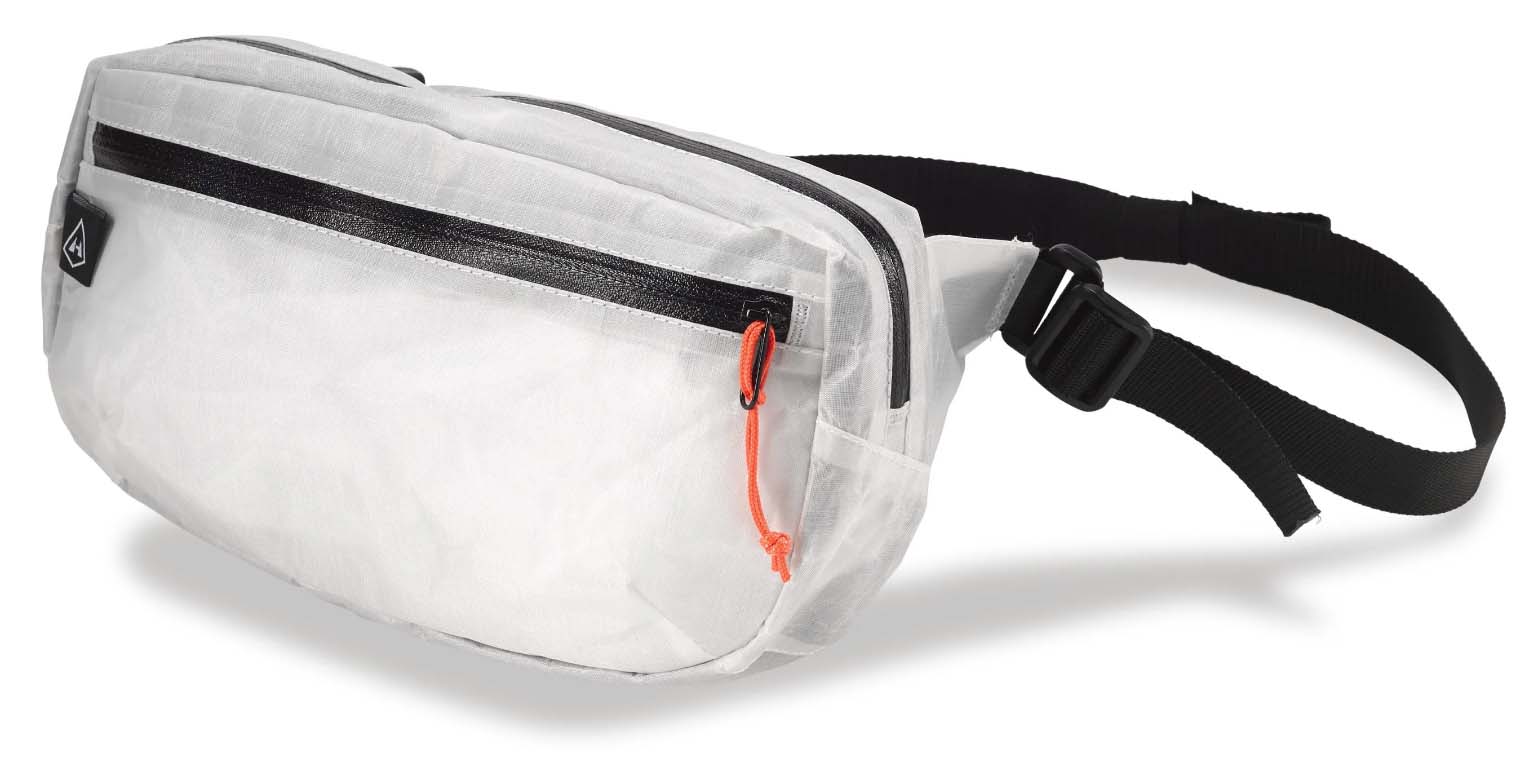 Pockets: 3
Pockets: 3
Capacity: 2.5L
Dimensions: 2.3 x 6 x 9 in.
Weight: 4.3 oz.
What we like: A light and waterproof design from an ultralight specialist.
What we don’t: There are cheaper and lighter UL designs to consider.
Hyperlite Mountain Gear specializes in ultralight backpacking gear made with Dyneema, which is known for its impressive strength-to-weight ratio and inherent waterproofing abilities. Their Versa is no exception, combining a competitive 4.3-ounce weight and reliable protection in a durable and outdoor-ready package. Despite its unassuming appearance, the Versa comes nicely equipped with three total pockets: one massive zippered pocket at the front, a mesh divider inside the main compartment for separating a wallet or map, and a stash pocket along the back for keeping your phone handy. Hyperlite didn’t skimp on the smaller details, either: The Versa boasts bound seams for added strength, quality YKK zippers to seal out moisture and keep your belongings protected, and long zipper pulls that are glove-friendly.
Who should buy the Hyperlite Mountain Gear Versa? Thru-hikers and minimalist backpackers looking for supplemental storage space will appreciate the ability to attach it to their backpack via the hipbelt or sternum strap—simply thread either strap through the pass-through sleeve at the back of the Versa (where the aforementioned stash pocket is located). Photographers, guides, and other outdoor-goers with specialized gear needs will also benefit from the ability to keep certain items (e.g., camera lenses or first aid supplies) close at hand without worrying about them getting wet. The Versa is no small investment at $79 and weighs a little more than competitors like the Thrupack Eco Summit Bum (3.6 oz.) and LiteAF Feather Weight (2.3 oz.) below, but it’s the only fully waterproof design of the trio (joining Matador's Freerain below) and a very appealing backcountry companion. For a smaller and lighter (2.7 oz.) option from Hyperlite, their 1.3-liter Vice Versa is similarly built but forgoes zippered storage for $20 less.
See the Hyperlite Mountain Gear Versa
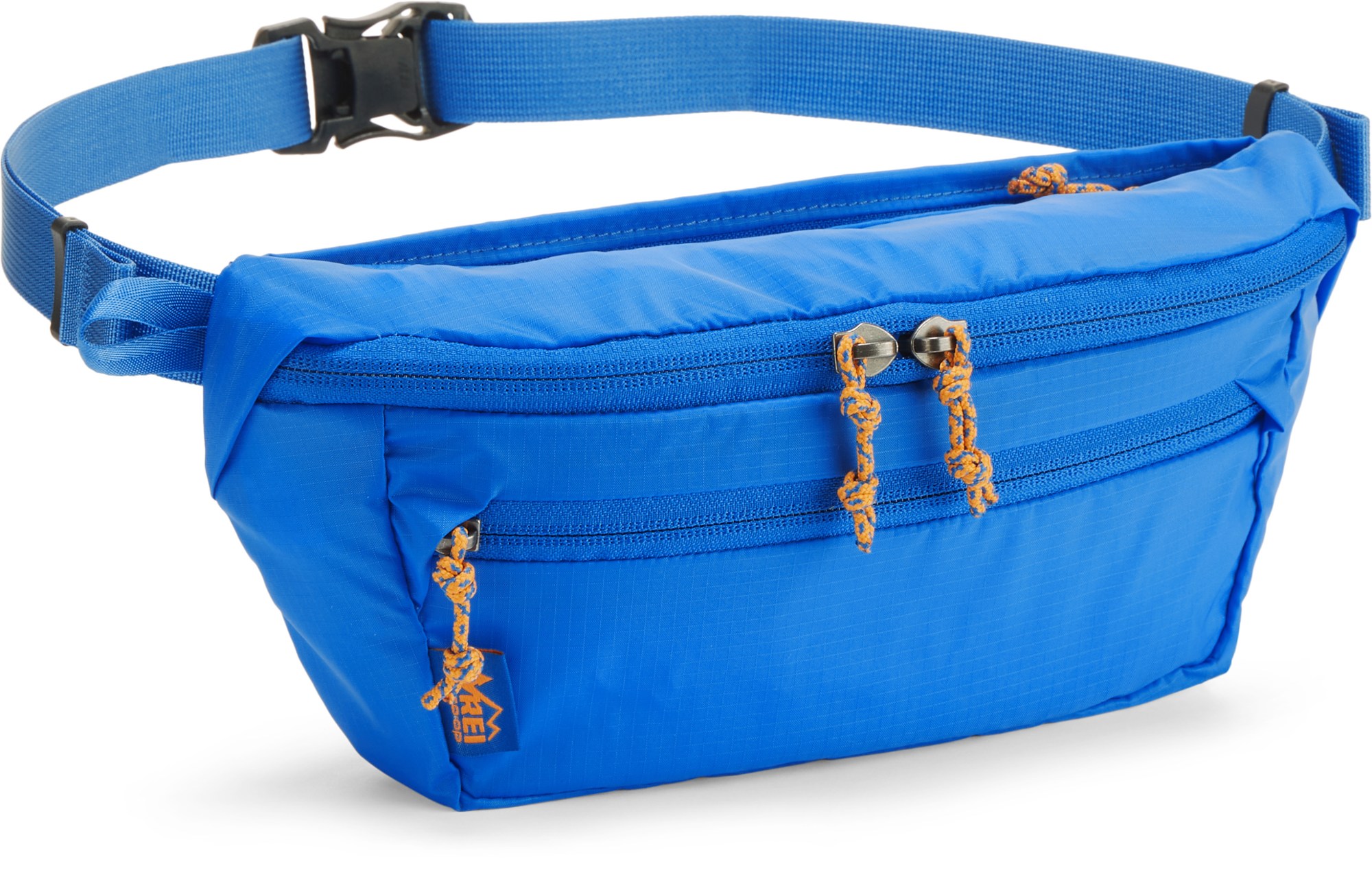 Pockets: 2
Pockets: 2
Capacities: 2, 5L
Dimensions: 11.5 x 5 x 2 in.
Weight: 4.0 oz.
What we like: Affordable, slim profile, and practical storage layout.
What we don’t: Relatively dated styling and a little underbuilt for outdoor use.
We often turn to REI for affordable but well-made gear, and the Trail 2 Waist Pack fits the bill nicely. For just $30 and a very respectable 4 ounces, you get a versatile 2 liters of capacity with a practical storage layout that comprises a zippered pouch at the front for separating small items and a sleeve at the back for keeping your phone or wallet handy but hidden. The Trail is also noticeably slim and low-profile, which translates to an unobtrusive and barely-there feel (it’s one of the best options here for wearing under a jacket in inclement weather). And while fairly common, the dual zippers for the main compartment make access quick and easy—you don’t have to unzip them all the way unless you’re removing a large item like a smartphone. Finally, the latest Trail 2 uses recycled materials for both the body and lining fabrics, which only add to its all-around appeal.
In addition to the standard Trail 2 here, REI also offers the design in “Print” and Pride” models with more vibrant styling (the regular version is a little dated). There’s also a larger 5-liter variation that tacks on daisy chain webbing, dual water bottle pockets, and a padded mesh backpanel for $20 more. If you’re on the fence about which option is best for you, we’d break it down as follows: The Trail 2 is the more versatile and everyday-friendly design, while the Trail 5 is the better hiking/outdoors companion that’s noticeably lighter (9 oz.) and less bulky than competitors like the Osprey Talon above (i.e., it has more crossover appeal). Both Trails are excellent values for what you get, and you’d be hard-pressed to find a better balance of price and performance.
See the REI Co-op Trail 2
 Pockets: 4
Pockets: 4
Capacities: 1.5, 2.5L
Weight: 6.7 oz.
What we like: Generous storage layout and typical Arc’teryx build quality.
What we don’t: Awkwardly shaped for hip carry.
Arc’teryx is known for their premium craftsmanship and attention to detail, and the Mantis 2—which is a part of its namesake daypack collection—carries the torch. What immediately stood out to us about the Mantis was the generous storage layout, which consists of a large front zippered pocket with a key clip and two pockets in the main compartment (one open stash pocket and one zippered security pocket). We’re also big fans of the sleeve along the backpanel that offers quick and easy access to a phone, transit pass, or travel documents. The downside to all of these separate spaces is that they eat into the Mantis’ interior—the pack doesn’t fit a 500-milliliter soft flask as easily as the Free Range Phanny above, for instance—but we personally love the boost in convenience for day-to-day use.
Why didn’t we rank the Arc’teryx Mantis higher? While overall capacity is pretty middle-of-the-road at 2.5 liters, the Mantis’ square shape gives it a bit of an awkward look and feel when worn on the waist. Arc’teryx does make the Mantis in a 1.5-liter version for $10 less that’s a little more hip-friendly, but both options strike us as better suited for cross-body carry (in terms of both function and fit). The branding is also a little loud on both versions with the Arc’teryx logo front and center, although this is largely a matter of personal preference. These small complaints aside, the Mantis is a well-made and thoughtfully built design at an approachable price point—especially for Arc’teryx.
See the Arc'teryx Mantis 2
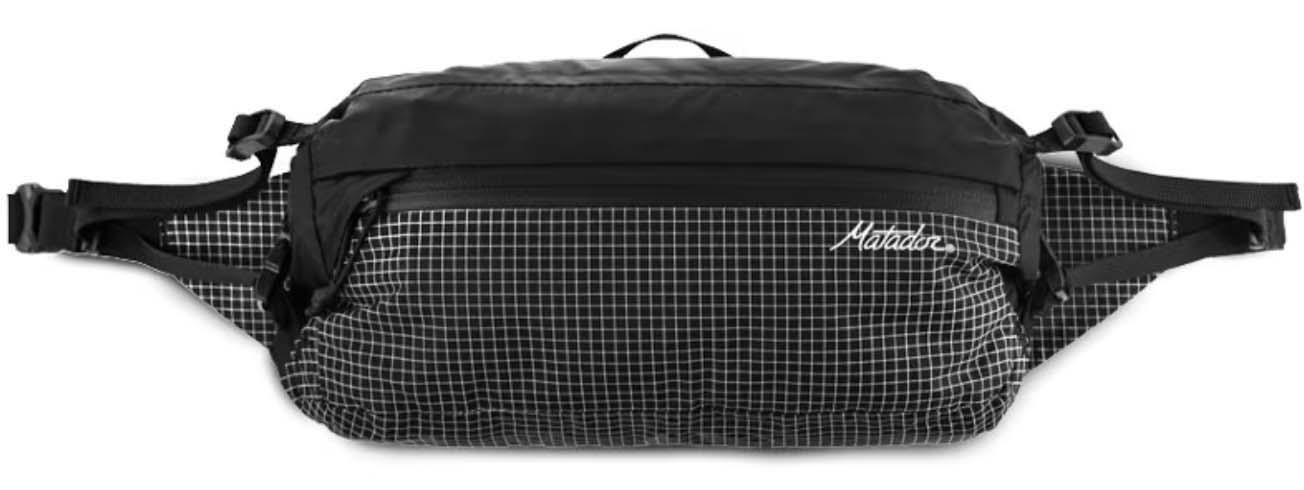 Pockets: 1
Pockets: 1
Capacity: 2L
Dimensions: 10 x 5 x 3 in.
Weight: 4.0 oz.
What we like: High-end materials and reliable waterproofing in a highly packable design.
What we don’t: Less versatile than the Hyperlite Versa above.
Matador is a travel-focused brand and relatively new to the outdoor space, but they’ve wasted no time in assembling a quality lineup of light but dependable packs for both casual and technical use. One of their leading packs is the Freerain, which is fully waterproof and compresses down impressively small for travel. The Freerain Hip Pack sticks to a similar formula, including a tough and tear-resistant Robic nylon build with reinforced panels in high-wear areas, a UTS coating and sealed seams for reliable wet-weather protection, and the ability to pack down for storage or travel—simply turn the Freerain inside out and stuff it into its front pocket. Matador also includes a mesh compression sack to make it even smaller.
How does the Matador Freerain compare to the Hyperlite Mountain Gear Versa above? Both designs are waterproof, weigh around the same (the Versa is 0.3 oz. heavier), and are purpose-built for backcountry use. The Freerain will save you around $20 and packs down much smaller, but not everyone will love the backpanel-free build—it can feel a little floppy when hiking—and roll-top closure, which helps with waterproofing but makes it harder to access the interior. The Versa is also a little bigger with 2.5 liters of capacity, and wins out in storage with three pockets (compared to just one for the Matador), and we appreciate the ability to attach it to our pack’s hipbelt or sternum strap for a boost in organization on the trail. The Hyperlite’s better organization, structure, and versatility earn it a higher spot on our list, but the Freerain nevertheless is a solid performer for its weight and size. For a cheaper and more everyday-friendly option from Matador, check out their $40 ReFraction Packable Sling.
See the Matador Freerain
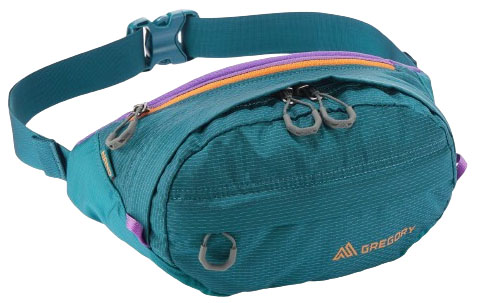 Pockets: 3
Pockets: 3
Capacity: 3.5L
Dimensions: 5.5 x 13 x 4 in.
Weight: 7.4 oz.
What we like: A trail-ready design that's more approachable than the Osprey Talon above.
What we don’t: Too big for daily wear; no keepers to secure the excess belt material when cinched.
Like Osprey’s Talon 6 above, Gregory’s Nano Waistpack is a well-executed take on its namesake daypack collection. However, unlike the high-capacity Talon, the Nano is an approachable option that’s built for the trail but still looks the part around town. While too big to serve as a dedicated daily companion, the 3.5-liter capacity is just about perfect for short day hikes—it's generous without feeling overly cumbersome on the trail—and the backpanel is sufficiently padded for all-day comfort. Most of the smaller details are equally well sorted, including a wider-than-average waist strap for distributing the load and molded zipper pulls that are very easy to operate, even with gloves on. Added up, the Nano strikes a nice middle ground between smaller and more casual designs like the REI Trail 2 above and massive, hiking-focused options like Osprey’s Talon.
It's worth noting that Gregory’s Nano collection also includes the Nano Waistpack Mini and Nano Shoulder Bag. Stacked up against the standard Nano here, the Nano Mini checks in an ounce lighter, boasts a 2.5-liter capacity, swaps the mesh backpanel for padded nylon, and forgoes the top zippered pocket. The Nano Shoulder Bag weighs the same as the Nano Mini but with 3.5 liters of capacity (the same as the standard Nano) and a thinner strap for cross-body carry. In the end, all are well-executed additions to the popular Nano line, but the standard Nano Waistpack here stands out as the most trail-ready of the bunch. We do wish it came with a belt keeper to secure the excess webbing when cinched tight, but it’s a small gripe and a quick DIY fix. For $5 less, we also like Osprey’s similarly built Daylight Waist Pack, although the 2-liter capacity is more limiting than the Nano’s 3.5-liter size.
See the Gregory Nano
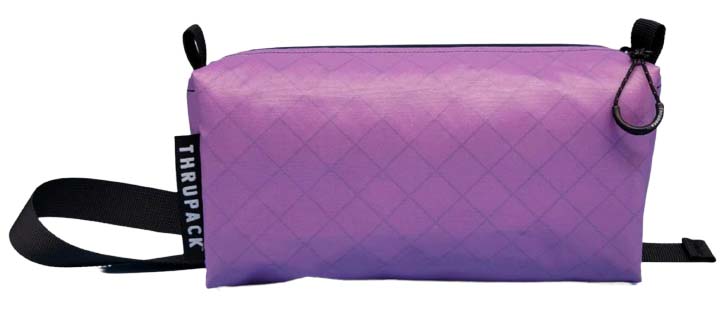 Pockets: 3
Pockets: 3
Capacity: 2.5L
Dimensions: 9 x 5 x 3 in.
Weight: 3.6 oz. (w/ standard strap)
What we like: Purpose-built backpacking design with easy on-the-go access; highly customizable and sustainably built.
What we don’t: A little too specialized for most.
Thrupack is a cottage brand that specializes in fanny packs purpose-built for thru-hikers (hence their name), and their Eco Summit Bum goes head-to-head with designs like Hyperlite’s Versa above and LiteAF’s Feather Weight below. Like those packs, the Summit Bum is tough and fully trail-worthy with high-end, tear-resistant materials and the ability to attach to your pack’s hipbelt or sternum strap for added organization (Thrupack has some helpful videos showing all the possible configurations). The Thrupack isn’t technically waterproof like the Hyperlite, although the EcoPak fabric, PU-coated zipper, and YKK buckle are trustworthy enough to rely on in most conditions. And a fun twist: The Summit Bum is fully customizable—choices include desired capacity, pocket layout, material and colorway, type of waist belt (standard or “Comfy”), and more—which is great news for experienced thru-hikers looking to perfect their kit and those who like to geek out on gear.
As we mentioned, the Thrupack Eco Summit Bum isn’t fully waterproof, which may or may not be a dealbreaker, depending on expected trail conditions. The Summit Bum does get the edge in weight over the Versa by 0.7 ounces (it’s 0.6 oz. heavier with the upgraded “Comfy” strap)—and you can save 1.2 ounces by ditching the waist strap and connecting it directly to your pack—but true ounce-counters will likely prefer the LiteAF Feather Weight below (2.3-2.6 oz. depending on fabric choice). Some folks will also be disappointed by the lack of zippered storage, although the two interior pouches and rear sleeve should cover the basics. In the end, the Eco Summit Bum is undeniably specialized and lacking in everyday appeal, but it’s a fun and tailor-made option for creative ULers. Bonus: The EcoPak fabric is made from 100%-recycled polyester and forgoes the use of harmful perfluorocarbons (PFCs for short).
See the Thrupack Eco Summit Bum
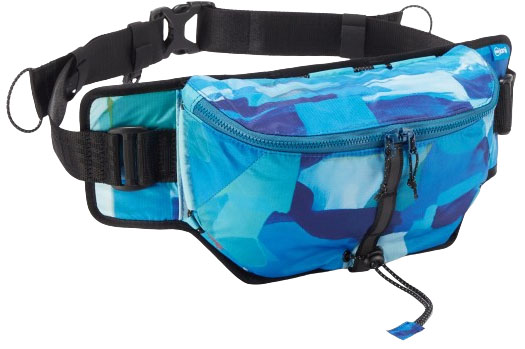 Pockets: 3
Pockets: 3
Capacity: 2L
Weight: 5.8 oz.
What we like: Practical storage layout and very secure while on the move.
What we don’t: Running focus results in a technical look that’s not particularly everyday-friendly.
Janji is a running brand that offers a competitive selection of comfortable, moisture-wicking apparel. While also designed for runners, their Multipass Sling Bag strikes us as equally great for travel and hiking. Comfort is a clear strong suit: The pack boasts a flexible, mesh-heavy backpanel that nicely balances breathability and support; the hipbelt is wide and does a great job distributing weight; and it’s easy to dial in a close fit with good adjustability and an exterior bungee cord to snug down a half-full load. Despite its technical intentions, the Multipass also comes well equipped in the storage department with a generously sized main compartment that includes a key clip and a separate space for cards, a zippered pocket at the back for securely stashing valuables, and a pass-through sleeve between the pack body and hipbelt for securing an extra layer or even a small water bottle. And we love the addition of the crossbody strap, which helps minimize unwanted movement and tucks neatly away when not in use.
Why do we have the Janji Multipass Sling Bag ranked here? First, the pack’s running focus results in a fairly technical look and feel that’s noticeably less everyday-friendly than designs like the Lululemon Everywhere Belt Bag or even Cotopaxi’s flashy Coso above. Fit is another potential issue: While highly adjustable, the positioning of the hipbelt and cross-body strap may cause discomfort for those with broader builds and bigger chests. Finally, we wish the bag featured a better way to stash a water bottle—the pass-through sleeve is workable most of the time, but runners will likely find it lacking in security. Of note: Despite its “sling bag” designation, we consider the Janji more of a fanny pack. For a more detailed breakdown of the former, see our section “What About Sling Bags?” in the buying advice below.
See the Janji Multipass Sling Bag
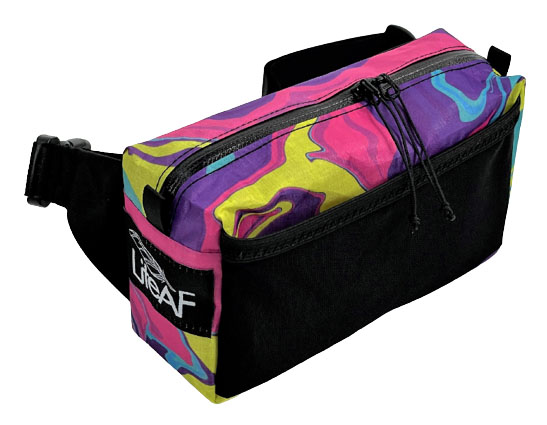 Pockets: 2
Pockets: 2
Capacity: 1.5, 2.1L
Dimensions: 8 x 4 x 2.8 in.
Weight: 2.3 oz.
What we like: Tons of customization options and the lightest design on our list.
What we don’t: Streamlined feature set and made to order.
Like Thrupack, LiteAF specializes in ultralight gear tailor-made for thru-hikers and other weight-conscious adventurers. At a scant 2.3 ounces for the 1.5-liter version (2.6 oz. with EcoPak’s EPX200 fabric), their aptly named Feather Weight is the lightest design on our list and an easy sell for dedicated ULers. Like the Summit Bum, the Feather Weight is highly customizable: You can choose between 1.5- and 2.1-liter capacities, a detachable versus fixed hipbelt, and three different fabrics: Ultra 200 (high-strength polyethylene), Dyneema, or EPX200 that’s made from recycled polyester. Regardless of your selections, all Feather Weight packs feature a water-resistant zipper, a stretchy mesh front pocket, taped seams, and a 1-inch webbing hipbelt with a 1-inch buckle. The pack also comes in a wide selection of eye-catching designs—two personal favorites are the Tropic Sunset and Liquid Candy (shown here)—that pump some serious flavor and personality into the market.
All of LiteAF’s Feather Weight fanny packs are made to order, which has its pros and cons. For reference, lead time at the time of publishing is listed at a very reasonable 2 weeks, but you can almost certainty expect a longer turnaround during peak season. We also wish LiteAF included a pass-through point at the back for attaching to a pack. Opting for the clip-equipped detachable waist belt (a $2 add-on) is a viable solution for those who own a backpack with a removable hipbelt, but that’s realistically a limited subset of backpackers. A final omission is zippered storage, although the mesh pocket at the front is taut enough to dependably stow your phone while hiking. In the end, the Feather Weight won’t be a top pick among casual users but is another feathery and fun option for avid backcountry-goers. For an even lighter (1.8 oz.) design with more subdued but classy styling, check out High Tail Designs’ Ultralight Fanny Pack.
See the LiteAF Feather Weight
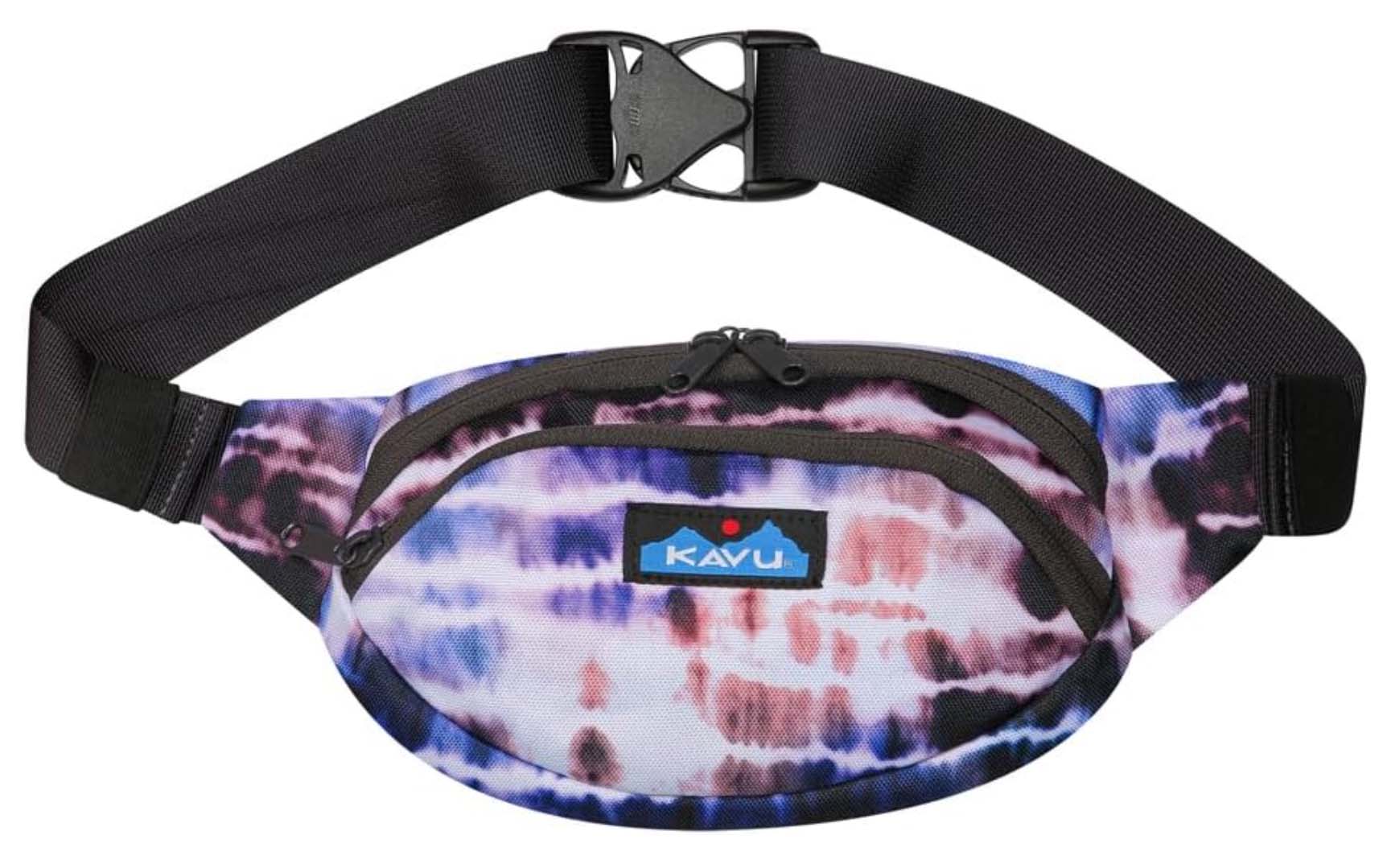 Pockets: 1
Pockets: 1
Capacity: 0.5L
Dimensions: 9 x 5 in.
What we like: Good price for a simple but practical everyday design.
What we don’t: The smallest option on our list.
Kavu's Spectator goes head-to-head with Patagonia’s Ultralight Black Hole Mini above as a small but practical waist pack for carrying the essentials. Right away, we’ll note that the 0.5-liter capacity is the smallest on our list and a little undersized for most uses—it can accommodate a phone, wallet, keys, and a couple small extras but not much more. The rest of the design is similarly basic with a single zippered pocket and a thick nylon waist strap, although we appreciate that Kavu included a padded backpanel. Combined with the approachable $25 price tag and wide selection of bright patterns and colorways, the Spectator is a nice value for minimalists who want to keep weight and bulk to a minimum while running errands, walking the dog, or taking a short walk.
Most fanny packs here come with a sleeve or additional pocket inside the main compartment for separating items like your wallet, cards, or documents, but not the Kavu Spectator. This isn’t necessarily a dealbreaker given the Spectator’s small size (you won’t have to rifle around for very long if items shift during transport), but it does detract from overall convenience. That said, we personally prefer more space for day-to-day use—there’s a reason that the 2-liter Cotopaxi Coso and Free Range Equipment Canvas Phanny are our go-to fanny packs. But if you’re in the market for a low-profile and unadorned waist pack that won’t break the bank, the Spectator certainly fits the bill.
See the Kavu Spectator
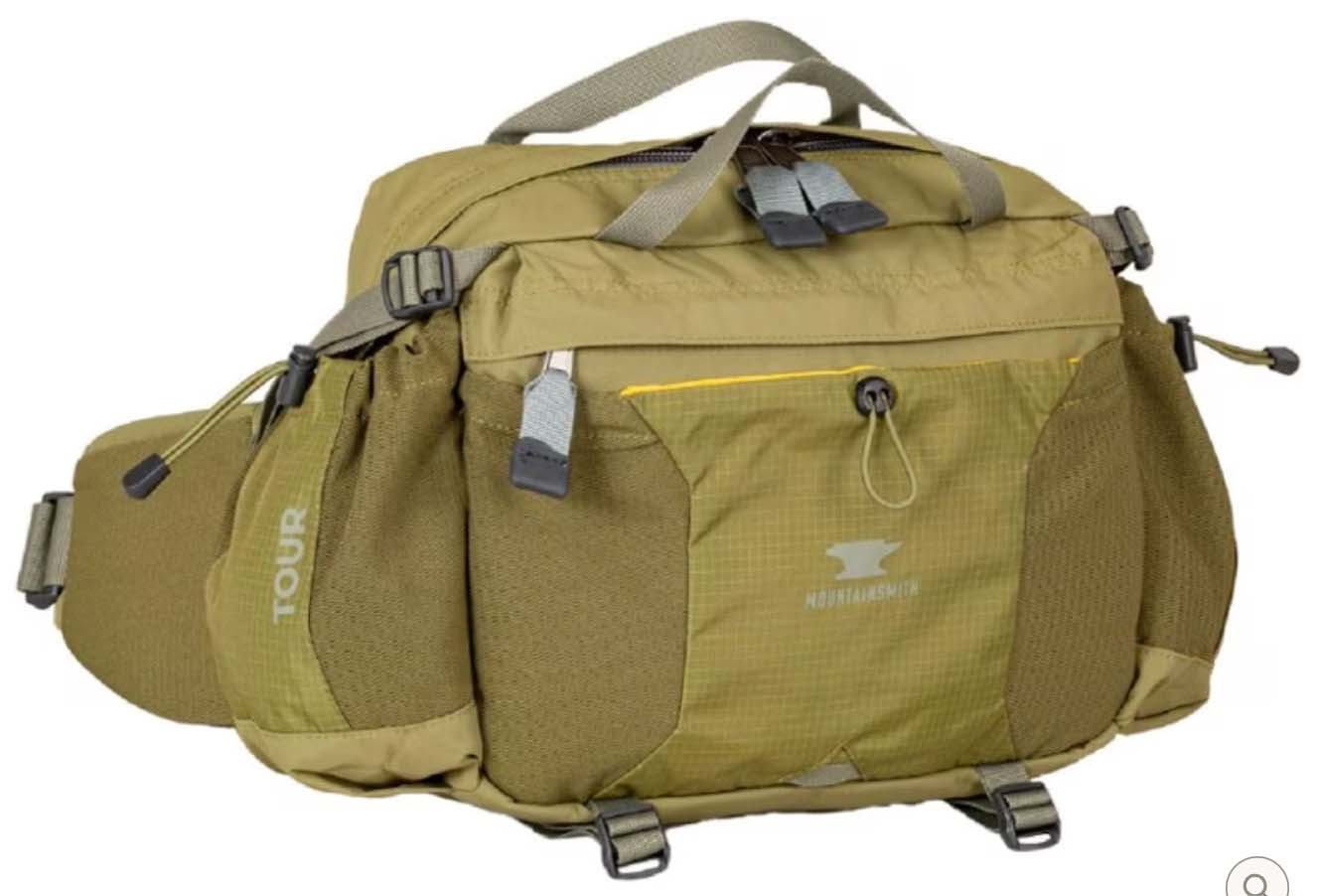 Pockets: 7
Pockets: 7
Capacity: 9L
Dimensions: 11.5 x 10 x 5 in.
Weight: 1 lb. 9 oz.
What we like: A no-holds-barred lumbar pack for gear-intensive adventures.
What we don’t: At this point, we’d prefer a lightweight daypack.
The 6-liter Osprey Talon above is plenty of fanny pack for most day hikers, but those with more specialized gear needs may want to step up to an even larger option like Mountainsmith’s 9-liter Tour. As expected for its size, the Tour leaves little to be desired in terms of organization: Storage abounds both inside and out, including smartphone-compatible hipbelt pockets, a mesh shove-it pocket at the front, side water bottle pockets that can each fit a 32-ounce Nalgene, a hidden stash pocket along the backpanel for keeping your phone or passport handy, and ample compression straps for securing extra layers. There’s even a headphone port and tablet-friendly sleeve on the inside that’s padded with foam for added protection. Taken together, the Tour is an intriguing daypack alternative for photographers, fly fishermen, mountain bikers, and maximalist hikers who prioritize easy on-the-go access to equipment, snacks, and other necessities.
Realistically, the Mountainsmith Tour is far too large and bulky for most. At 1 pound 9 ounces, it’s a significant 10.6 ounces heavier than Osprey’s 3-liter-smaller Talon above and looks comically big, especially on those with smaller frames. On the bright side, the Tour does come with a removable shoulder strap for cross-body carry, or you can pick up Mountainsmith’s Strapettes for wearing the pack backpacking-style (a really innovative option, in our opinion). That said, most hikers will still prefer a lightweight daypack—it will distribute the load much better, feel more natural over long distances, and likely come with a bump in capacity for little to no weight penalty. But if you’re prone to neck or back pain or prefer to keep certain equipment close at hand, the Tour will surely get the job done. Of note: Mountainsmith claims that the waist belt extends to 48 inches, but some users report it’s around 10 inches shorter.
See the Mountainsmith Tour
| Fanny Pack | Price | Pockets | Dimensions | Weight | Capacities | Waist* |
|---|---|---|---|---|---|---|
| Cotopaxi Coso 2L Hip Pack | $60 | 3 | 11 x 7 x 3 in. | 10.0 oz. | 2L | Up to 54 in. |
| JanSport Fifth Avenue | $30 | 1 | 6 x 12.5 x 4 in. | 4.0 oz. | 2.5L | Unavail. |
| Patagonia UL Black Hole Mini | $35 | 1 | 4.8 x 8 x 2 in. | 3.5 oz. | 1L | 8-36 in. |
| Lululemon Everywhere 1L | $38 | 2 | 7.5 x 2 x 5 in. | Unavail. | 0.7, 1, 2L | Up to 41.7 in. |
| Osprey Talon 6 | $90 | 5 | 8.3 x 9.8 x 5.9 in. | 14.4 oz. | 6L | 25-50 in. |
| CamelBak M.U.L.E. 5 | $90 | 5 | 9.5 x 10.2 x 5.1 in. | 1 lb. 2 oz. | 5L | 28-46 in. |
| Free Range Canvas Phanny | $59 | 1 | 9.5 x 6 x 3.5 in. | 6.0 oz. | 2L | Unavail. |
| Hyperlite Versa | $79 | 3 | 2.3 x 6 x 9 in. | 4.3 oz. | 2.5L | Unavail. |
| REI Co-op Trail 2 | $30 | 2 | 11.5 x 5 x 2 in. | 4.0 oz. | 2, 5L | Up to 50 in. |
| Arc'teryx Mantis 2 | $50 | 4 | 10 x 8.5 x 3.9 in. | 6.7 oz. | 1.5, 2.5L | Unavail. |
| Matador Freerain | $60 | 1 | 10 x 5 x 3 in. | 4.0 oz. | 2L | 21-52 in. |
| Gregory Nano | $40 | 3 | 5.5 x 13 x 4 in. | 7.4 oz. | 3.5 | Up to 48 in. |
| Thrupack Eco Summit Bum | $58 | 3 | 9 x 5 x 3 in. | 3.6 oz. | 2.5L | Unavail. |
| Janji Multipass Sling Bag | $56 | 3 | 16.5 x 6.25 x 4 in. | 5.8 oz. | 2L | Unavail. |
| LiteAF Feather Weight | $50 | 2 | 8 x 4 x 2.8 in. | 2.3 oz. | 1.5, 2.1L | Up to 46 in. |
| Kavu Spectator | $25 | 1 | 9 x 5 in. | Unavail. | 0.5L | Unavail. |
| Mountainsmith Tour | $90 | 7 | 11.5 x 10 x 5 in. | 1 lb. 9 oz. | 9L | 28-48 in. |
*Editor's note: "Waist" refers to the adjustability range of the hipbelt.
A big part of our job at Switchback Travel is staying up-to-date on current outdoor trends, and we have to admit we were pretty excited to see fanny packs making a comeback. Smaller and lower-profile than daypacks, they’re a great option for day-to-day use, short hikes, and everything in between. Managing editor Sarah Nelson kicked off this guide in early 2023 with 17 leading waist packs, from small and budget-friendly designs that wear well around town to purpose-built options for hikers and backpackers. While our current lineup above hasn’t changed all that much, there have been some notable additions and innovations, including CamelBak’s hydration bladder-equipped M.U.L.E. that’s great for hikers and bikers alike, along with Thrupack’s Eco Summit Bum that utilizes ultralight but durable EcoPak—a fabric that’s made from 100%-recycled polyester and PFC-free (we break this down more in our “Sustainability” section below).
We use fanny packs for everything from running errands around town to supplementing a backpacking pack on quick jaunts from camp. While all of the models above have a few things in common, designs vary considerably depending on your intended use(s). The first question you’ll want to answer is how much capacity you need, which also generally correlates with weight and packability (the bigger the pack, the heftier and bulkier it will be). Padding, durability, and pocket layout are also important considerations, and we look for designs that are comfortable to wear all day, hold up well over time, and come adequately equipped for organizing the essentials. As the market changes, we’ll update this guide accordingly as new and noteworthy options are released.

Also known as waist packs, lumbar packs, hip packs, and sometimes belt bags, fanny packs come in a variety of styles and capacities and serve many purposes. Starting at the casual end, many of the designs above can be a viable substitute for carrying the essentials (e.g., a phone, wallet, and keys) in a purse or stuffing them in your jacket or pant pockets. Our go-to everyday options are typically on the smaller side—we’ve found the sweet spot to be between 1 and 2.5 liters for our day-to-day needs—and a few of our favorites include the Cotopaxi Coso (2L), Patagonia Ultralight Black Hole Mini (1L), and Free Range Equipment Canvas Phanny. Many of these designs also cross over well for travel—it’s a nice dose of confidence being able to keep our documents and valuables close to our body while navigating through security checkpoints and exploring around town when we arrive at our destination.
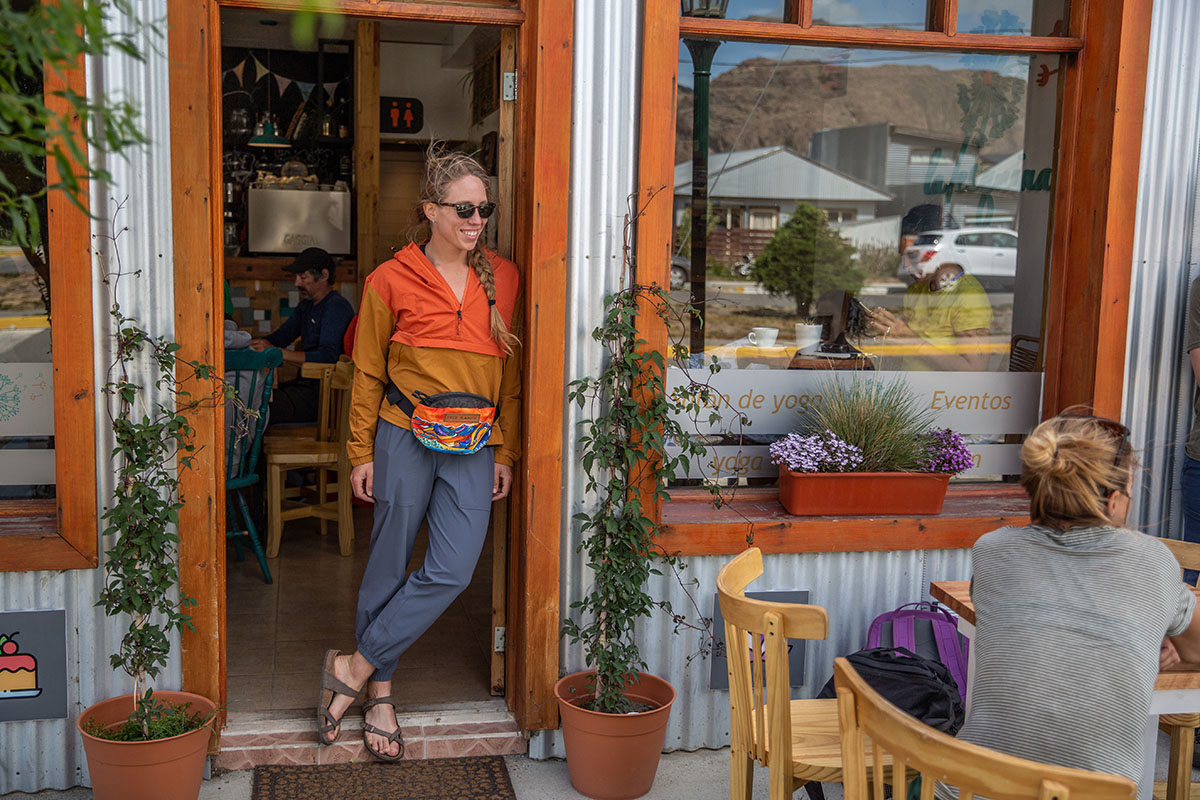
At the other end of the spectrum are hiking-focused fanny packs like Osprey’s Talon 6 and Mountainsmith’s Tour, which are much larger and more feature-rich. These are essentially pared-down daypacks and come with all the requisite features for done-in-a-day adventures, including dedicated water bottle storage, ample pockets for stashing the essentials and plenty of snacks and extras, and compression straps for securing a light layer or two. Like daypacks, they also boast well-padded hipbelts and breathable mesh backpanels for good all-day comfort. Weight and bulk are the two biggest downsides: The Talon checks in at 14.4 ounces, while the Tour is a whopping 1 pound 9 ounces (most casual waist packs weigh around 8 oz. or less). In our opinion, most folks would be better served by a lightweight daypack, but hiking-focused waist packs do have their place for photographers, fly fishermen, and other outdoor-goers who want to keep certain equipment close at hand.
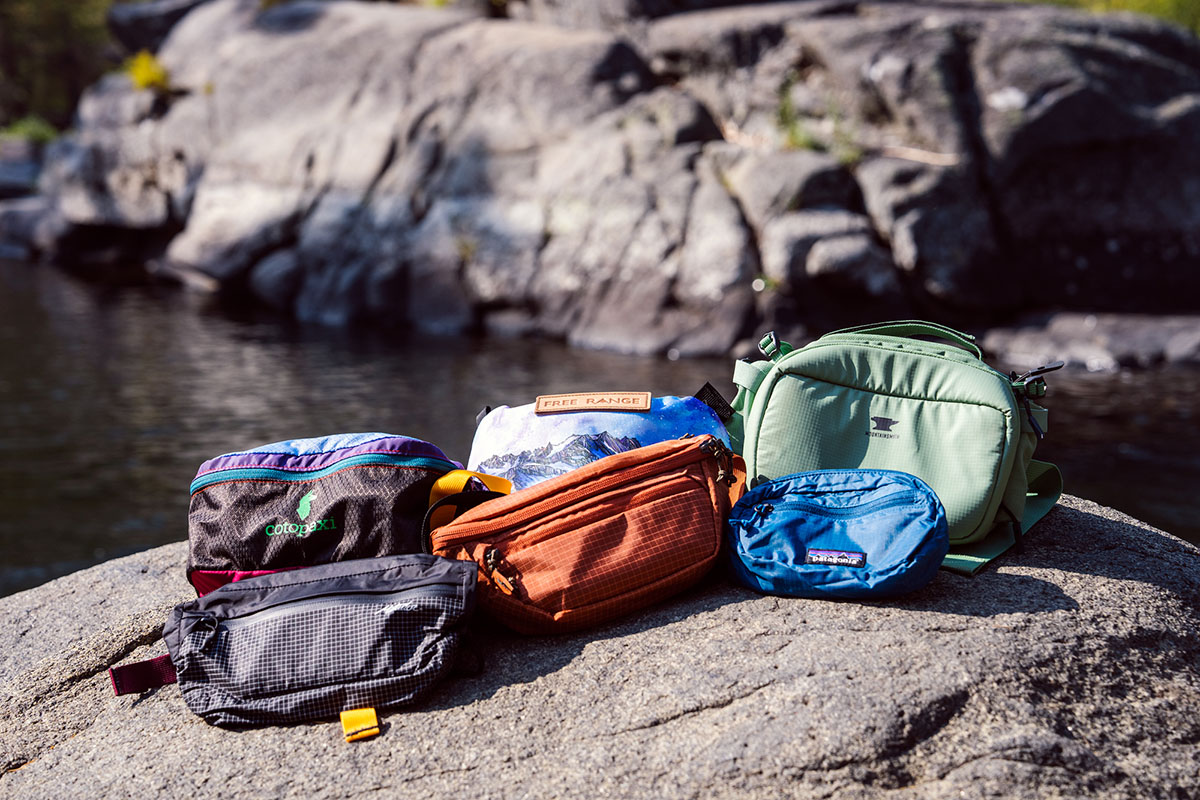
A third and final category is ultralight, thru-hike-friendly fanny packs like Hyperlite Mountain Gear’s Versa, Matador's Freerain, Thrupack’s Eco Summit Bum Classic, and LiteAF’s Feather Weight. Commonalities include high-end fabrics that are thin but impressively tear-resistant (Dyneema leads the pack here), streamlined feature sets that just cover the basics, and—of course—low weights (the Versa is the heaviest of the trio at 4.3 oz.). Oftentimes, UL models also allow you to remove certain components (like the hipbelt) to shave off another ounce or two, and many can be connected to your backpack's hipbelt or sternum strap for added on-trail storage. Finally, customization is popular among cottage brands, and both Thrupack and LiteAF offer the ability to hand-pick materials, colorways, and more. For those with more specialized gear needs, there are also plenty of purpose-built designs for activities like running, fishing, biking, and more (we break these down further in our section on “Activity-Specific Fanny Packs” below).
Fanny packs come in a wide variety of capacities, with the picks above ranging from just 0.5 liters for the Kavu Spectator to a whopping 9 liters for the Mountainsmith Tour. In general, capacity correlates closely to a waist pack’s intended use: Casual, everyday-friendly designs tend to be smaller, while hiking-specific models are larger to accommodate a day’s worth of gear, water, and snacks. Ultralight, thru-hiking-friendly waist packs fall closer to the former end, ranging from 1.5 liters for the LiteAF Feather Weight (it also comes in a 2L version) to 2.5 liters for the Hyperlite Versa and Thrupack Eco Summit Bum. As we mentioned above, we’ve found the 1- to 2.5-liter range to be just about perfect for day-to-day use. As an example, our 2-liter Free Range Equipment Canvas Phanny easily accommodates our plus-sized iPhone, wallet, keys, an epi-pen, lip balm, and a small e-reader with room to spare.
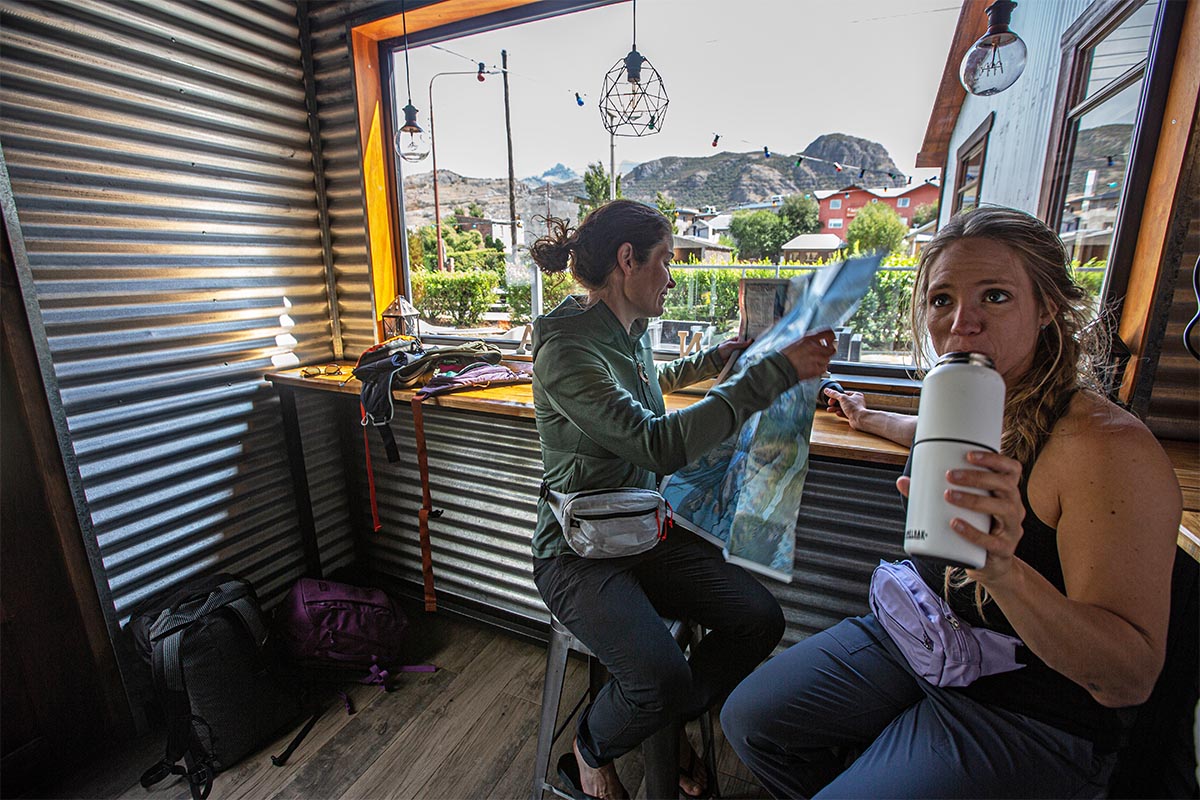
Dimensions go hand in hand with capacity but can be a helpful indicator of overall heft and bulk. For example, Mountainsmith’s 9-liter Tour measures 11.5 inches long, 10 inches tall, and 5 inches deep, while Patagonia’s 1-liter Ultralight Black Hole Mini is just 8 inches long, 4.8 inches tall, and 2 inches deep. Most designs hover somewhere in the middle, but lower-profile options like the Black Hole and REI Co-op’s Trail 2 (also 2 in. deep) make it incredibly easy to throw an outer layer on overtop in cold or inclement conditions. By comparison, those with a wider profile—like Free Range’s 3.5-inch-deep Canvas Phanny—look and feel noticeably bulkier and more awkward under a jacket (especially one with a trim fit). In the end, capacity will be the more important spec for most, but dimensions can help paint a clearer picture.
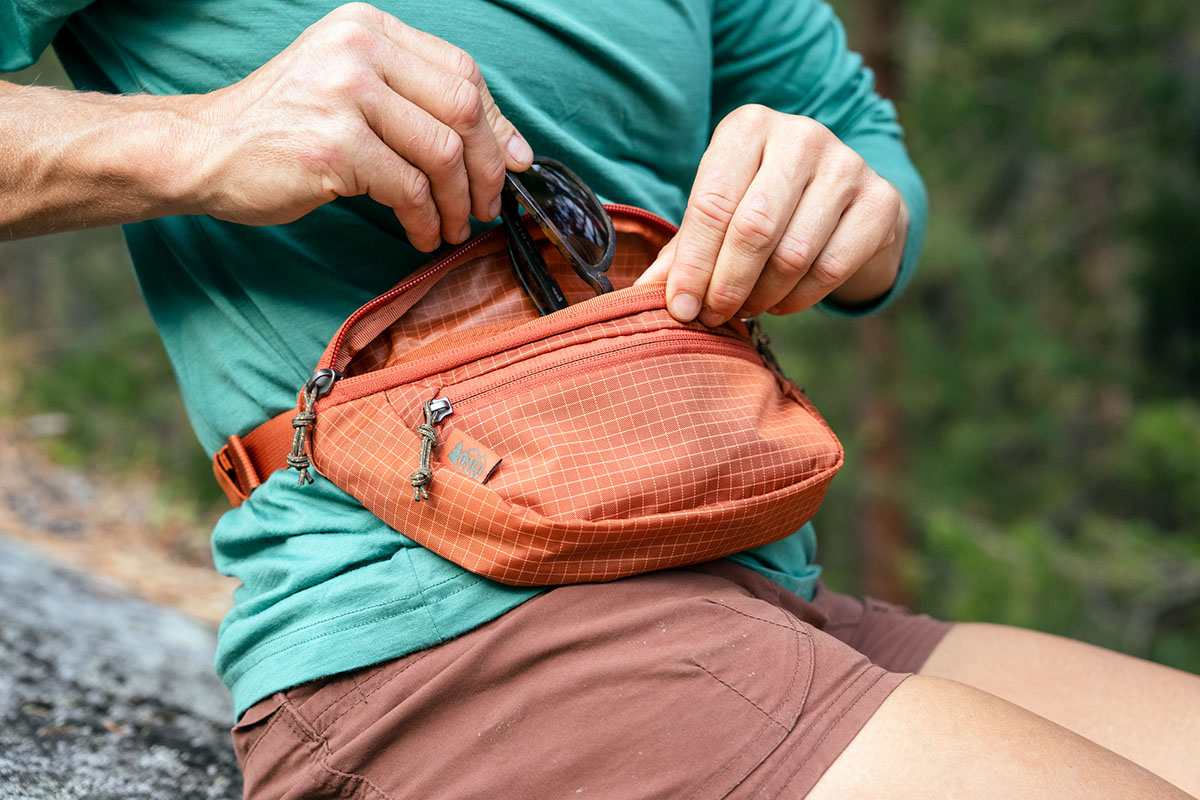
Fanny packs are a pretty versatile bunch, and a lot of that stems from the ability to wear them different ways, including on your hips, over one shoulder, or across your body. Most of the options above can be worn multiple ways, so your carry choice will largely depend on your objective. For example, securing your fanny pack around your waist is the best option for hiking, biking, and other outdoor activities that involve a lot of movement since you can cinch it tight to minimize bouncing. Over-the-shoulder and cross-body carry are more common for casual use and around-town wear—it’s much easier to get your pack on and off when sitting down for a meal, for instance. Mountainsmith’s Tour also comes with a removable shoulder strap and is compatible with their Strappettes (sold separately) for backpack-style carry.
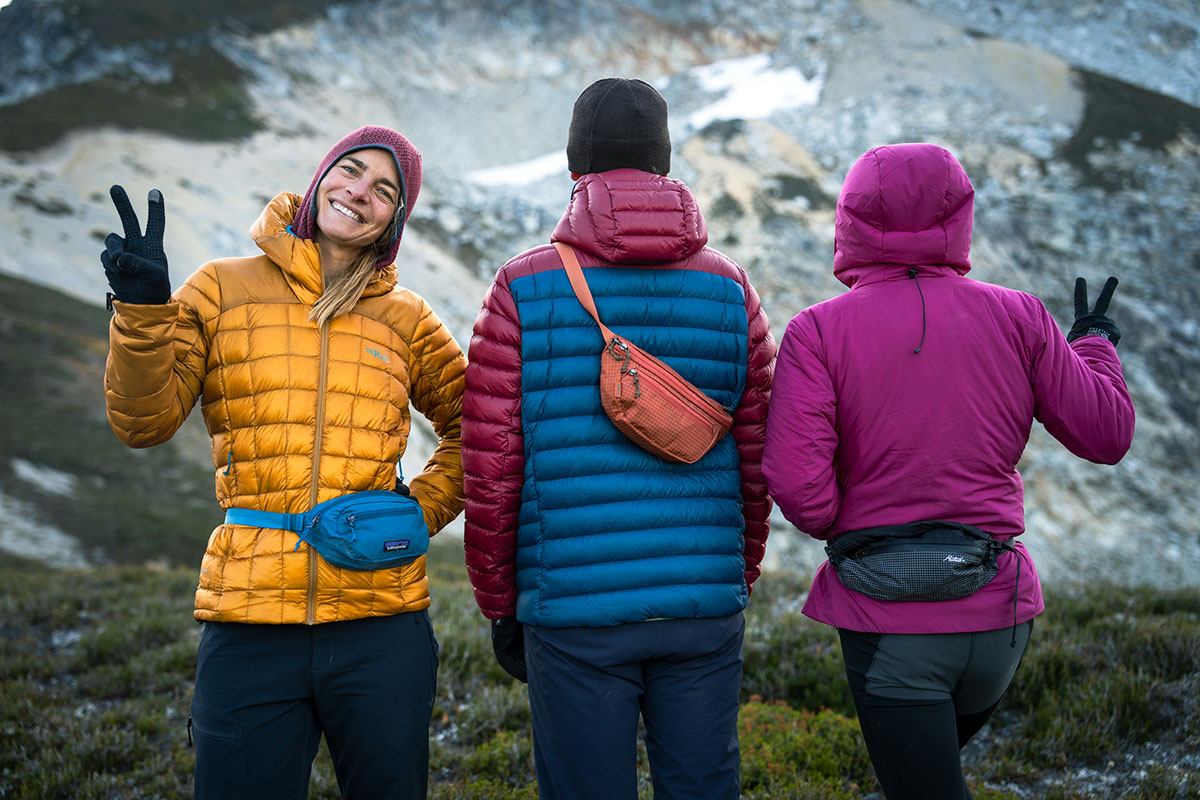
Many targeted ultralight designs—including the Hyperlite Versa and Thrupack Eco Summit Bum—are also made to attach to your backpack’s hipbelt or sternum strap for added on-trail storage. The process is quick and easy: Simply thread your pack’s strap through the pass-through sleeve at the back of the fanny pack. LiteAF’s Feather Weight notably omits a sleeve, although opting for the detachable strap allows it to connect to backpacks with removable hipbelts. If you’re curious about all the possible configurations, Thrupack has a few videos showcasing the various carry options for their Summit Bum.
Most casual users won’t likely pay much attention to weight or packability since fanny packs are a pretty lightweight category in general. That said, there’s still a decent spread in the market, and backcountry users in particular will benefit from keeping weight to a minimum. For reference, the lightest design on our list is LiteAF’s aptly named Feather Weight at just 2.3 ounces, while the heaviest is Mountainsmith’s Tour at 1 pound 9 ounces. Most options fall somewhere in the middle, with the majority hovering in the 3- to 8-ounce range. From our experience, this is plenty light for day-to-day use, and most people likely won’t notice a few extra (or fewer) ounces when running errands, walking the dog, or even embarking on a short bike ride or day hike.
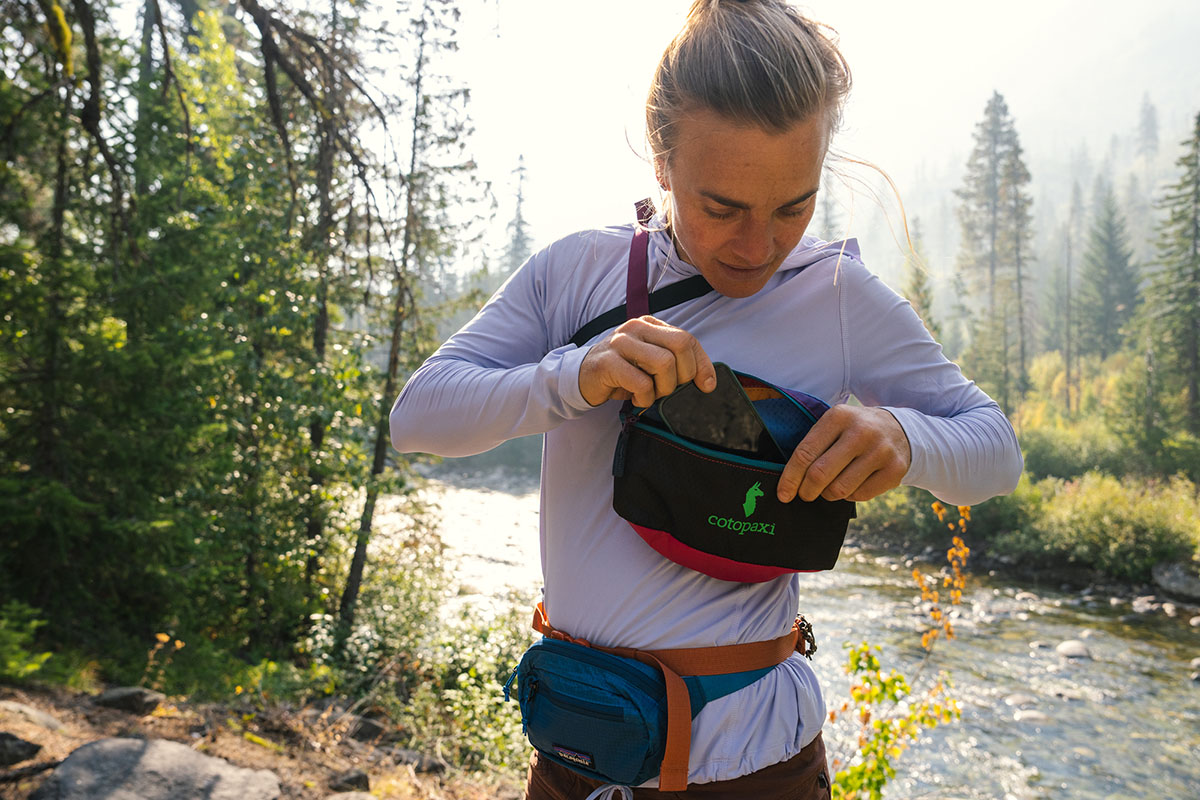
On a similar note, packability is a feature that’s nice to have but far from necessary. From our list above, only two designs are made to pack down into one of their pockets when not in use: the Patagonia Ultralight Black Hole Mini and Matador Freerain, the latter of which also comes with a separate compression sack for stuffing down even further. However, while we always appreciate minimizing bulk for storage and travel, these fanny packs are already pretty small and streamlined to begin with. In other words, being able to pack them down doesn’t provide a huge benefit, but it may help keep them in better shape over the long term (there’s a lower risk of punctures when stored with sharp gear, for instance).
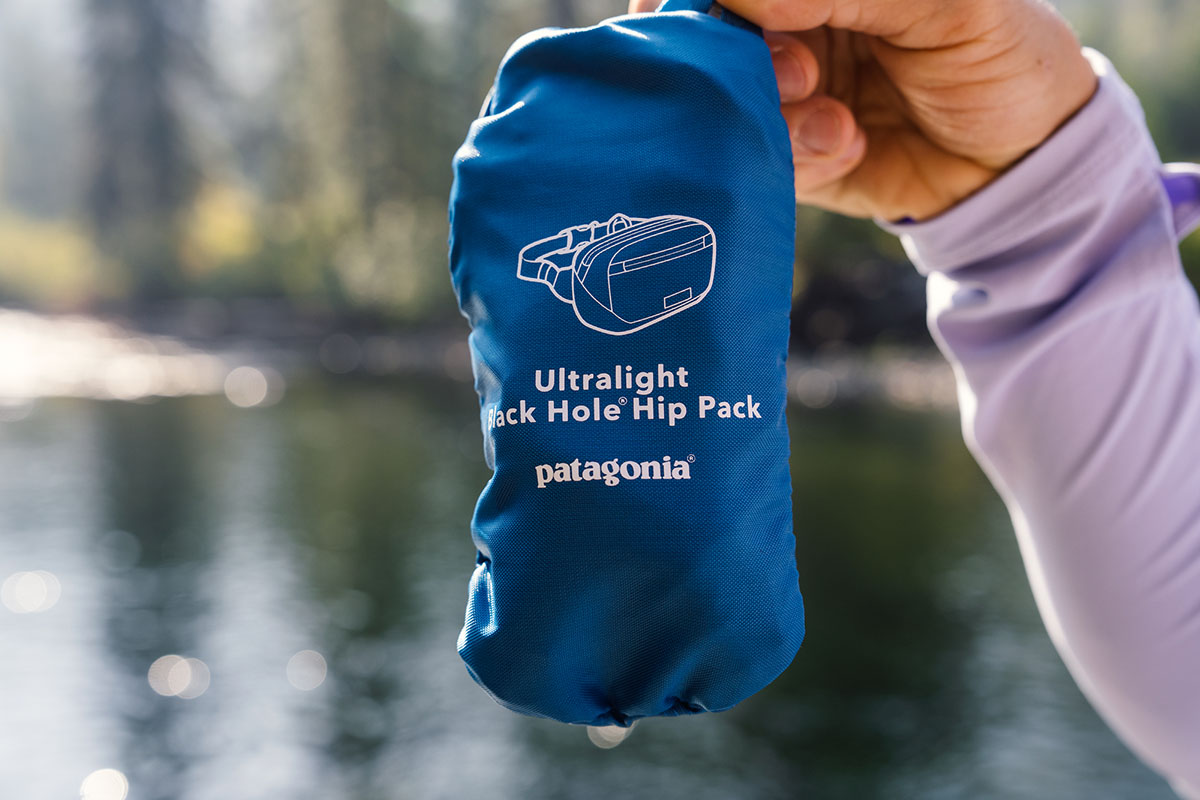
The organizational layout of a fanny pack can have a major impact on overall convenience and accessibility. When starting your search, you’ll want to look closely at the number of pockets, their size and location, and how many (if any) are zippered. If we had to design our ideal fanny pack, it would have a zippered front pocket that’s smartphone-compatible, a rear sleeve for securely and discreetly storing a phone or passport, and a non-zippered pocket along the back of the interior for separating a wallet or cards from the rest of our belongings in the main compartment (plus a key clip, which is very common). This is one of our biggest gripes with Free Range Equipment’s Canvas Phanny: With just one non-zippered pocket inside and no exterior storage, we often find ourselves rummaging through the pack to find what we’re looking for. On the flip side, Arc’teryx’s Mantis 2 checks all of the boxes above and tacks on an additional zippered security pocket in the main compartment, which is pretty ideal for everyday use.
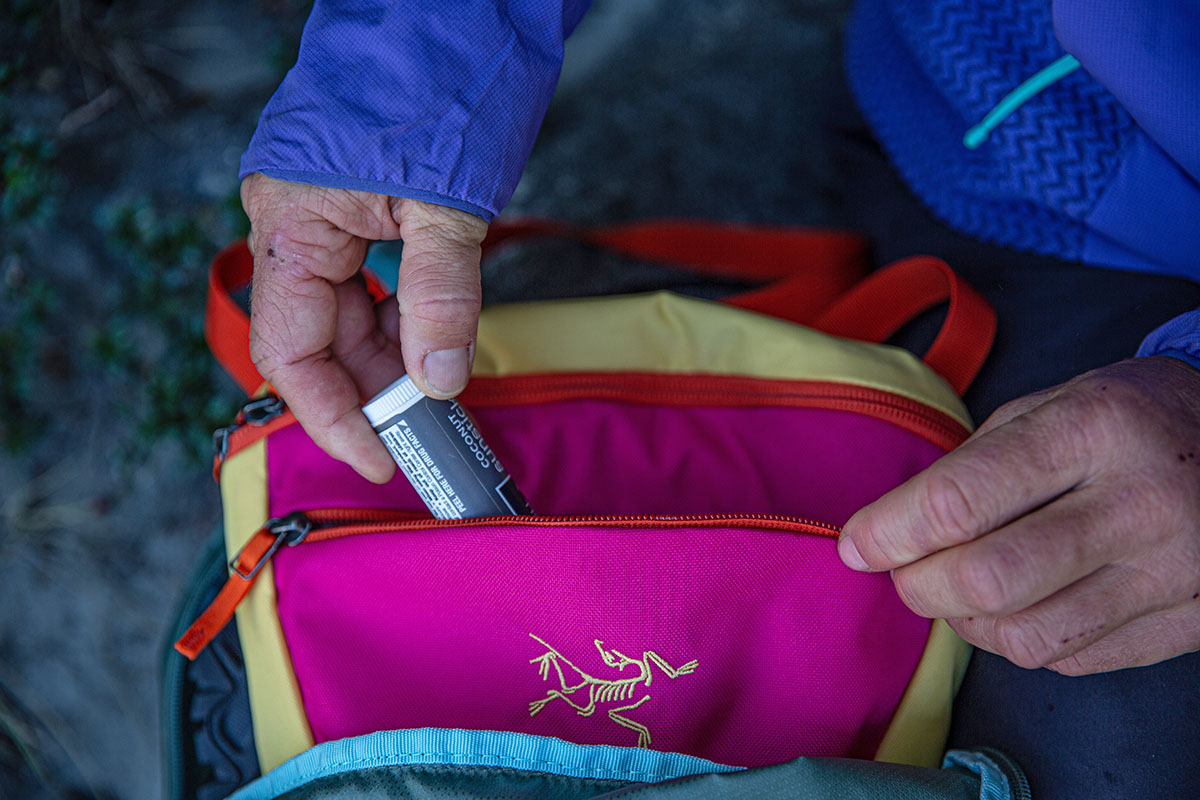
Pocket layout and design don’t vary too heavily, but there are a few outliers worth calling out. One is Janji’s Multipass Sling Bag, which features a pass-through sleeve between the pack body and hipbelt that’s great for stashing a thin layer or a small water bottle. Hiking-specific designs like the Osprey Talon 6 and Mountainsmith Tour also come with hipbelt pockets, dedicated water bottle storage, and compression straps for securing extra layers. Speaking of layers, the front pouch on Cotopaxi's Coso 2L Hip Pack is perfect for stashing a light windbreaker or shell. Finally, LiteAF’s Feather Weight has a generous mesh pocket at the front that’s taut enough to stow your phone, although we think it’s better suited for a thin beanie or liner gloves. In the end, only you can decide how many pockets you need (more aren’t always better), but laying out your belongings can be a good place to start.
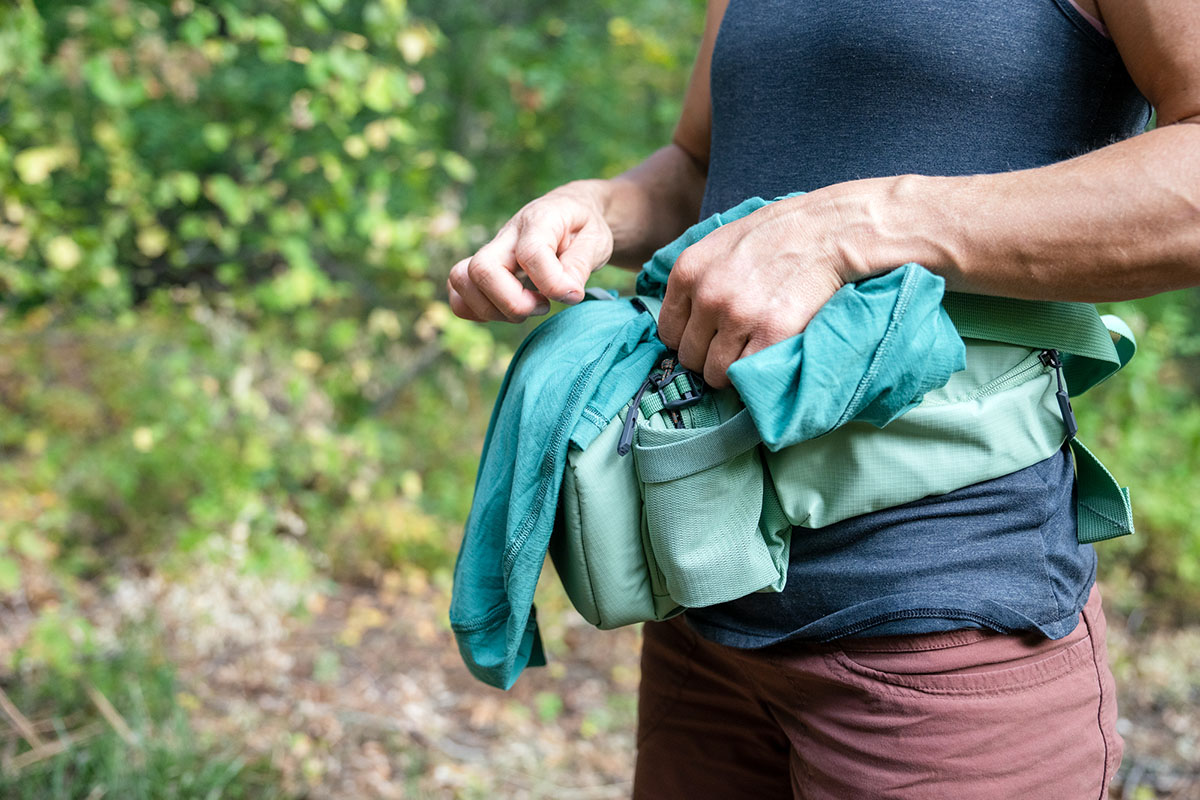
In general, fanny packs fall into one of three buckets: Those with no padding, those with lightly padded backpanels (oftentimes all foam), and hiking-specific designs with mesh-heavy, backpack-like cushioning along the backpanel and hipbelt. Since most fanny packs are relatively small and light, most folks won’t be too deterred by a basic, backpanel-free design like the Matador Freerain. The Freerain does feel a little floppy and unsupportive while hiking, and it’ll likely grow a little clammy in mid-summer temperatures, but it’s perfectly serviceable for trail outings and bike rides in most conditions.
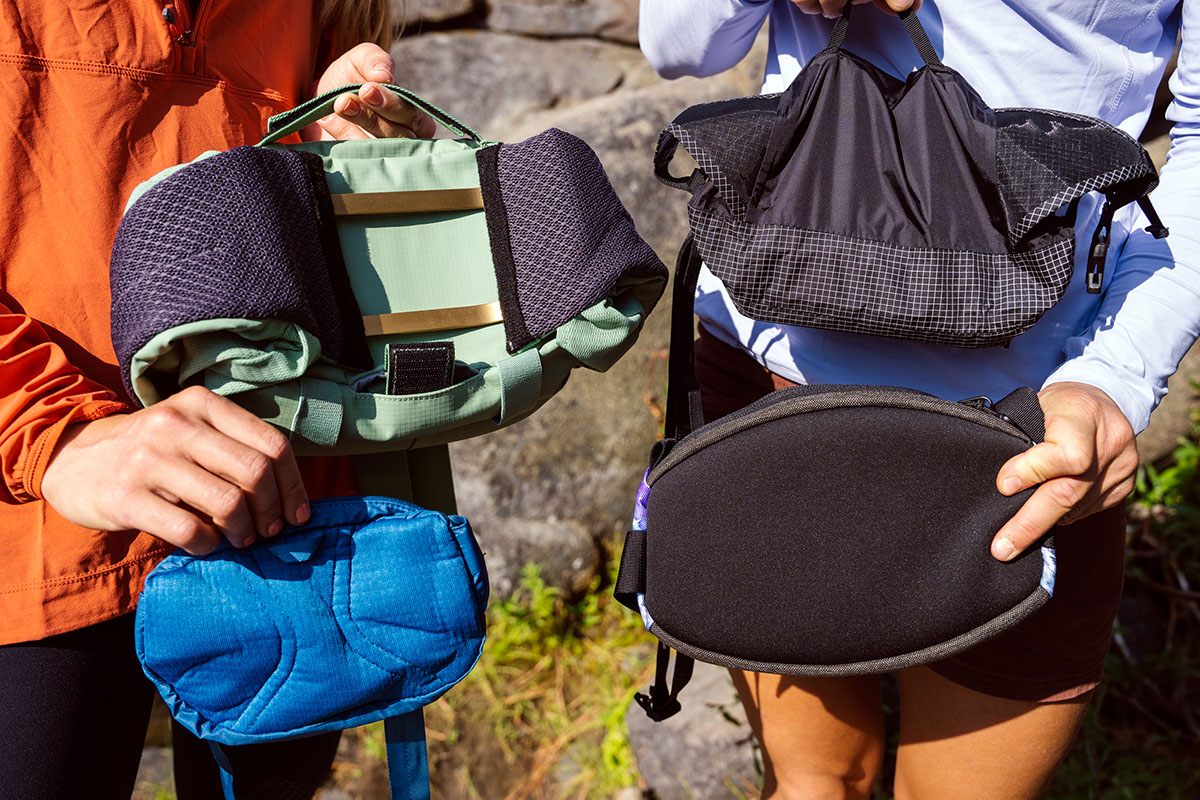
At the other end of the spectrum are hiking-focused models like the Osprey Talon and Mountainsmith Tour that boast thickly padded, mesh-heavy backpanels and hipbelts. In general, these designs offer great all-around cushioning and support for long days on the trail, and the boost in breathability is a boon in hot weather. However, not everyone will love the rigidity—flexible alternatives like the aforementioned Freerain pack down much smaller for stuffing into a pack or duffel bag. Those looking for a versatile option for around-town and light outdoor use will likely prefer a middle-of-the-road fanny pack with a lightly padded backpanel. A few of our favorite crossover options include the Patagonia Ultralight Black Hole Mini, Arc’teryx Mantis 2, and Gregory Nano. In our experience, these provide the best balance of comfort and bulk.
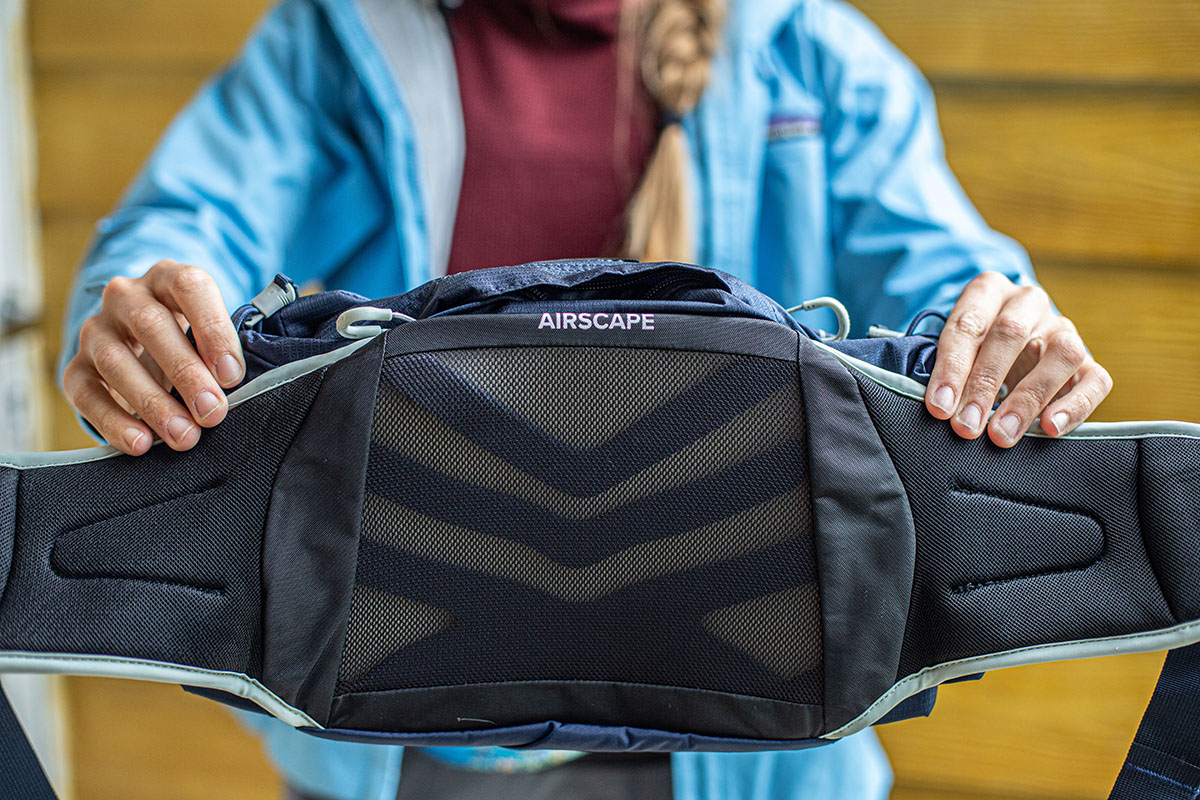
Like "Padding and Support" above, waist strap design can be broken into three categories: standard webbing, thicker seat belt-style straps, and well-cushioned, backpack-like hipbelts. Most picks above fall into the first grouping with relatively thin, low-profile webbing straps that get the job done for day-to-day and light outdoor use but don’t stand out from a comfort or support perspective. For a step up in both of those areas, seat belt-style waist straps are popular among casual designs—like the Lululemon Everywhere Belt Bag 1L—and excel for cross-body carry in particular (a wide strap will distribute the weight better and dig in less than a webbing strap). Finally, hiking-specific models like the Osprey Talon 6 and Mountainsmith Tour take cues from daypacks with thickly cushioned hipbelts for shuttling a day’s worth of water, snacks, and gear, although you’ll still want to be conscious of weight (too much resting on your hips can result in lower back pain).
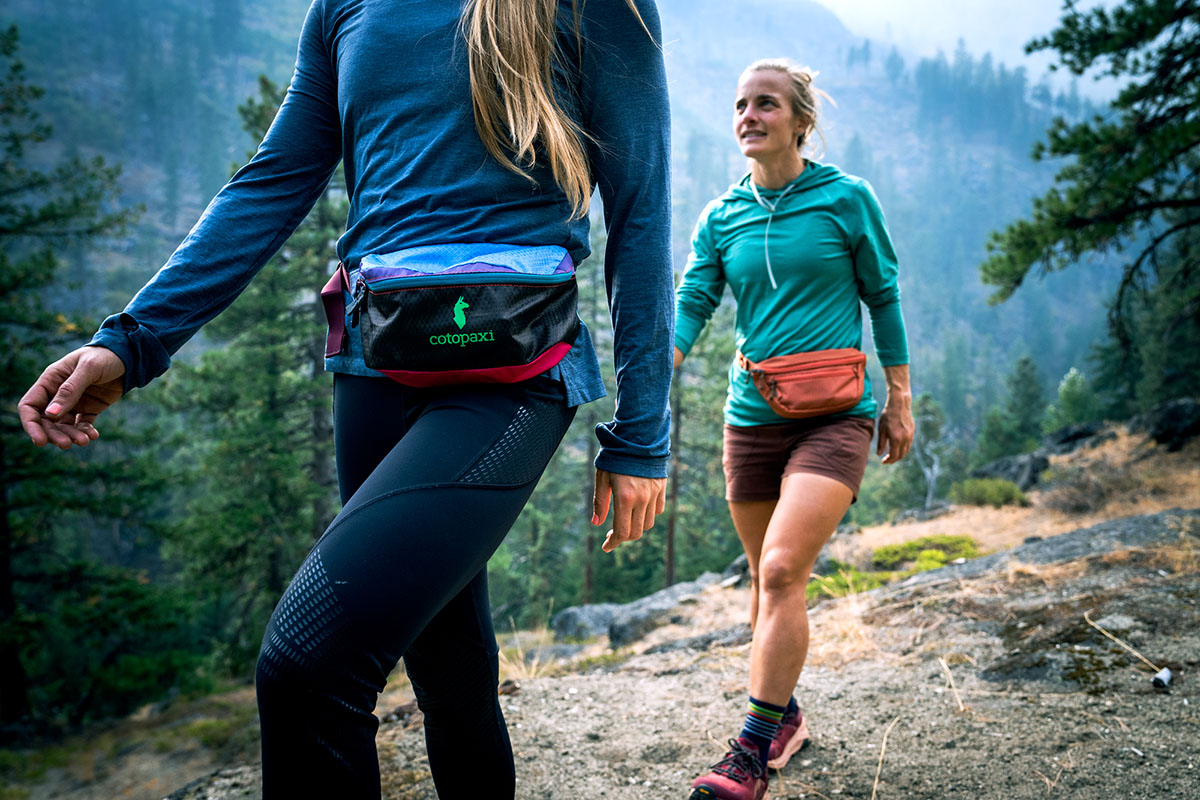
Most fanny packs are plenty durable for their intended uses, but material type and thickness do vary considerably and will be an important consideration for some. For reference, “denier” (D) is used to denote fabric thickness, with a higher number indicating beefier materials (note: Not all manufacturers provide this spec, but most do). To highlight the spread, minimalist designs like the Patagonia Ultralight Black Hole Mini (70D body) and Matador Freerain (50 and 70D) use relatively thin fabrics, while hiking-specific models like the Mountainsmith Tour (420D) and Osprey Talon (100 x 210D with 420D in high-wear areas) are much thicker. This isn’t too surprising—we expect hiking-focused packs to hold up well around sharp equipment like trekking poles, tent stakes, etc.—but does have implications for those who plan to wear their fanny pack mainly for outdoor activities.
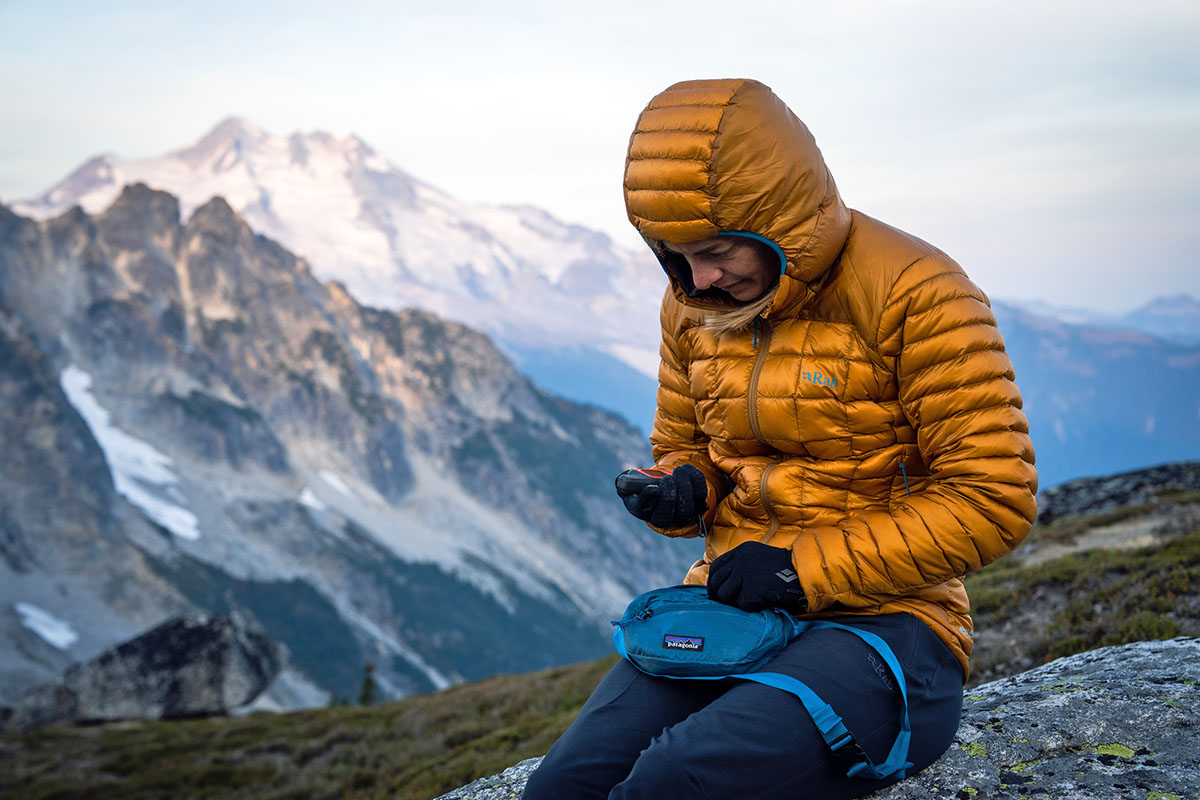
Regardless of denier, the type of material used can have a significant impact on long-term durability. For example, the Free Range Canvas Phanny has a thick, abrasion-resistant exterior that stands up well to long-term use. While thin, Dyneema is also known to be impressively tear-resistant for its weight (as seen in the Hyperlite Versa and some versions of the LiteAF Feather Weight). UHMWPE, or ultra-high-molecular-weight-polyethylene, is another material used to boost strength while keeping weight to a minimum, and we’ve had positive experiences thus far with the Matador Freerain, which uses a mix of Robic nylon and gridded UHMWPE in high-wear areas. In other words, denier is certainly a part of the equation, but it’s just one piece in the larger durability puzzle.

Waterproof Fanny Packs
Most fanny packs can fend off light moisture with durable water-repellent (DWR) coatings or other water-resistant treatments. Some, like Thrupack’s Eco Summit Bum, take it a step further with YKK zippers and/or buckles, which we’ve come to trust even in sustained rain. However, while these measures will be fully sufficient for most, those who live in notoriously wet climates or who don’t mind getting out in inclement weather may want to consider a fully waterproof design. Matador’s Freerain is one option, combining PU and UTS waterproof coatings with full seam sealing, YKK zippers and buckles, and a roll-top closure for the utmost in wet-weather assurance. Hyperlite Mountain Gear’s Versa is also fully waterproof thanks to its Dyneema fabrics, YKK zippers, and bound seams. In the end, most people will be perfectly fine with a standard DWR-equipped fanny pack, but the Matador and Hyperlite add a nice dose of security for getting out in places like the Pacific Northwest.
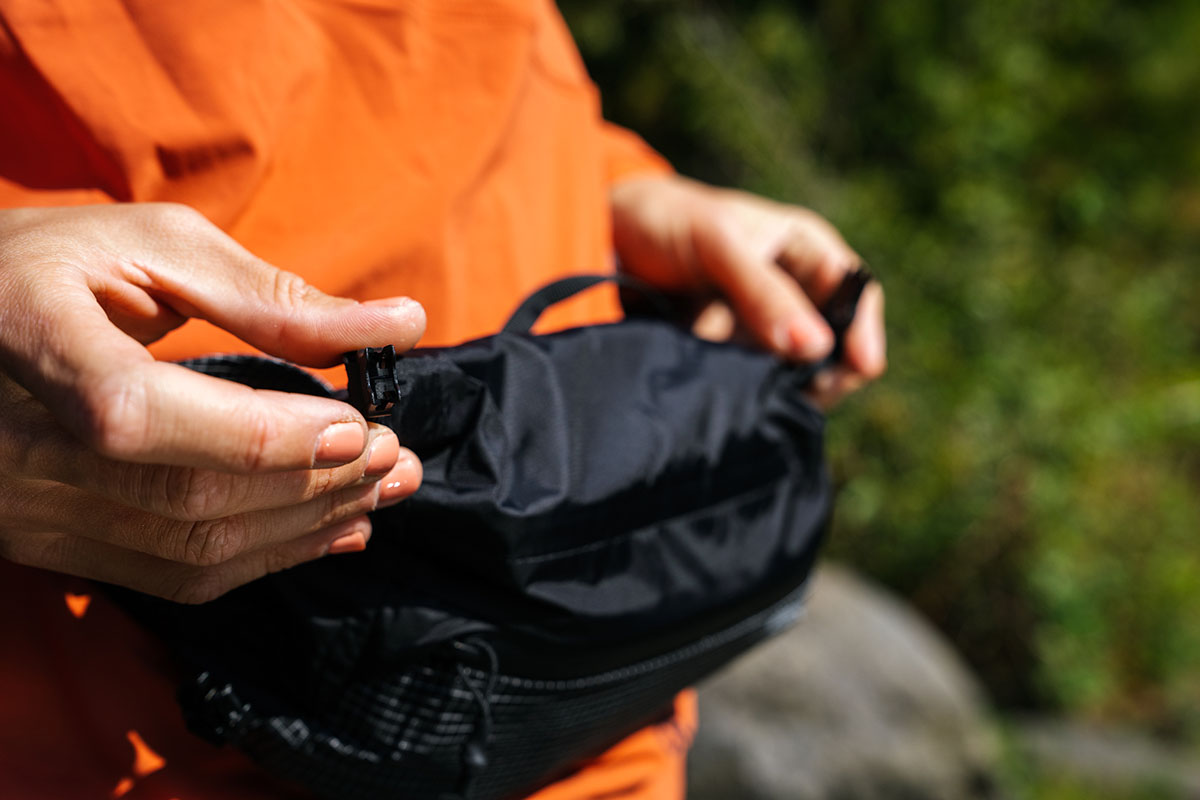
All of the fanny packs above only come in one size, but the good news is that most designs feature highly adjustable hipbelts that can accommodate a wide range of waist sizes. Thankfully, some manufacturers provide that range on their product page, although many do not (we’ve listed this spec when available in our comparison table above). For reference, Patagonia’s Ultralight Black Hole Mini will fit waists from 8 to 36 inches, while many competitors—including the Osprey Talon 6, REI Trail 2, Matador Freerain, and Gregory’s Nano—max out closer to 50 inches. This likely won’t pose an issue for most but is worth considering if you have wider hips or plan to layer heavily underneath. Finally, it’s worth noting that Osprey makes a women’s-specific version of the Talon called the Tempest 6, which fits waists from 24-44 inches (compared to 25-50 in. for the Talon). This is pretty typical of women’s designs, but don’t be afraid to go with the unisex/men’s model if it fits you better.
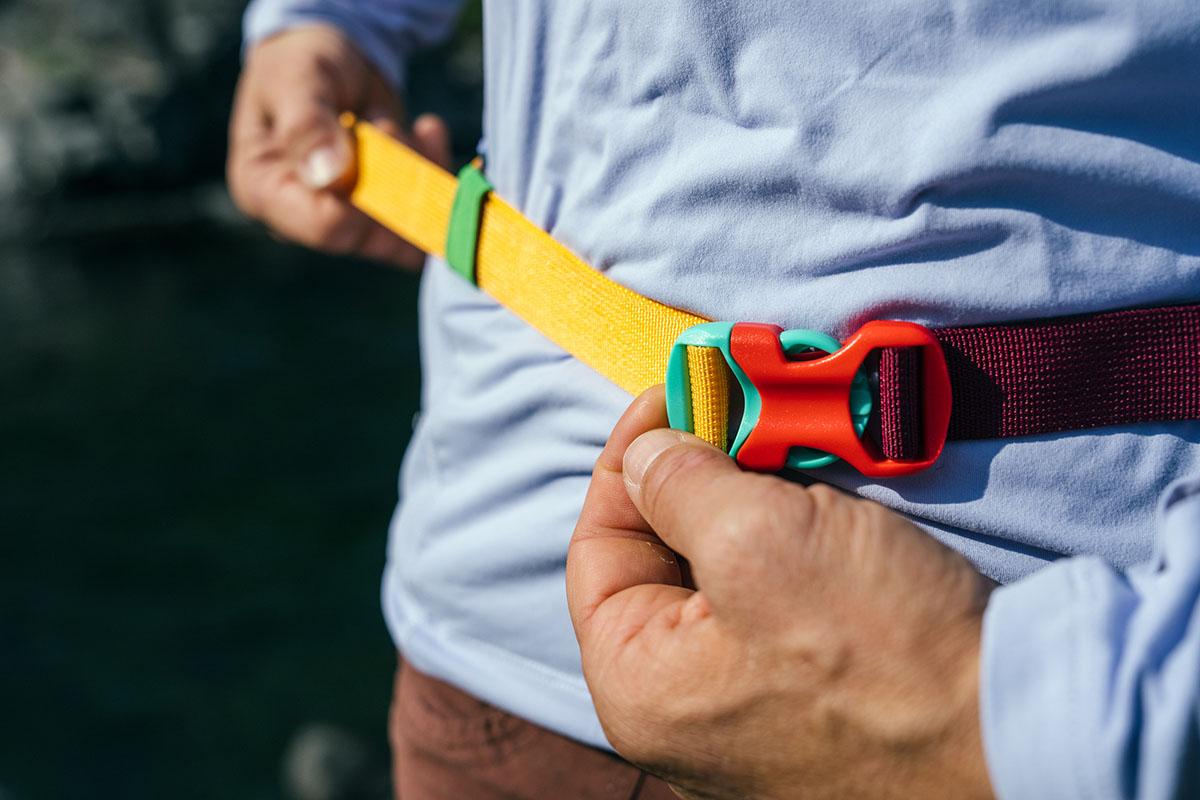
Our impact on the environment has never been of greater concern, and we appreciate it when brands go the extra mile toward minimizing their impact. The use of recycled fabrics has increased considerably over the past few years and is now fairly common in the fanny pack market. More recently, manufacturers have turned to PFC-free DWR coatings made without per- or polyfluorinated chemicals—"forever chemicals" known to be harmful to the environment. We also keep an eye out for bluesign-approved and Fair Trade Certified fabrics. A couple standouts above include Cotopaxi's Coso 2L Hip Pack, which is made with 100%-recycled nylon, and Patagonia’s Ultralight Black Hole Mini, which uses recycled and bluesign-approved fabrics that are certified to the Fair Trade standard. Finally, some specialized ultralight designs—like those from Thrupack and FeatherLite above—use a new innovation called EcoPak EPX200, a fabric that’s made from 100%-recycled polyester and treated with a PFC-free DWR finish.
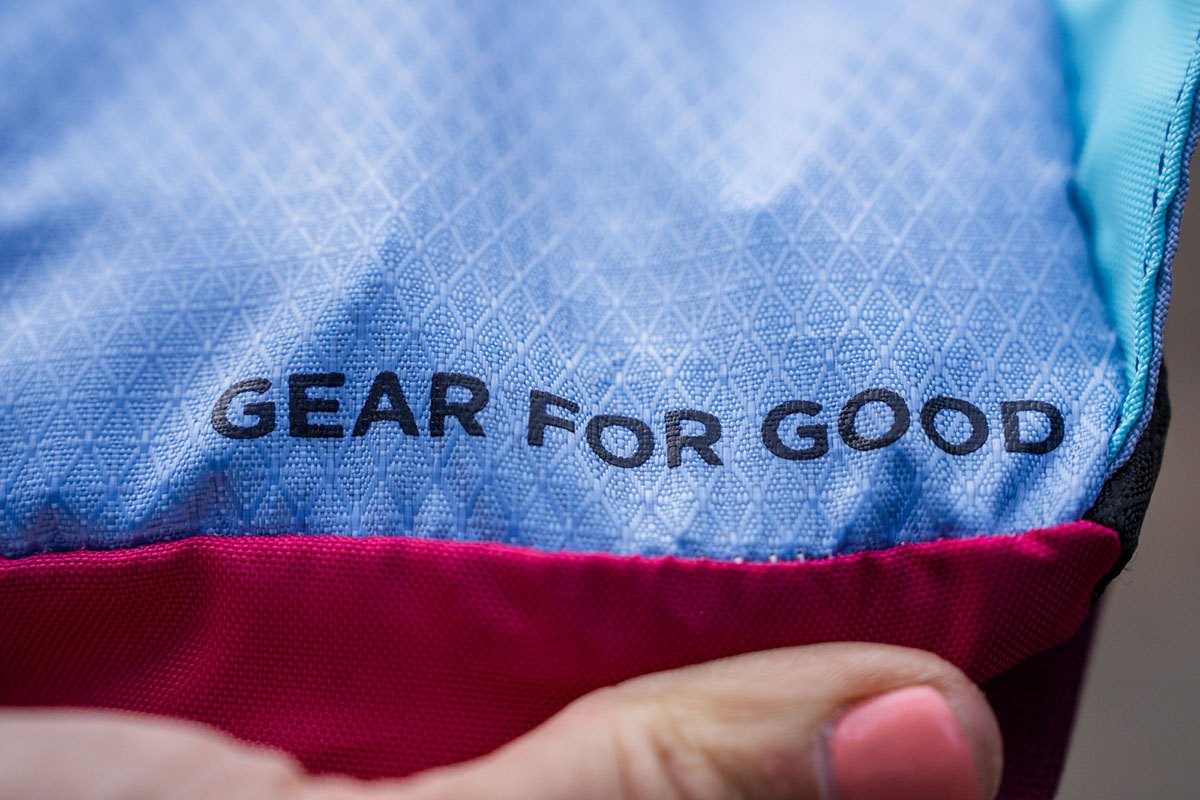
We exclusively cover fanny packs above, but we’d be remiss not to mention sling bags, which are another popular style that typically comes with a single shoulder strap for cross-body carry. Importantly, many fanny packs can be worn either on your waist or over one shoulder (and many folks will opt for the latter the majority of the time), but wearing a fanny pack across the body usually results in a slight drop in convenience due to the way the pockets are positioned. By contrast, dedicated sling bags like Patagonia’s Atom and Kavu’s Rope Sling boast vertically oriented pockets and zippers that make cross-body access easier. Sling bags also generally offer more capacity than waist packs due to their more ergonomic shape—the Atom and Kavu are 8 and 10 liters respectively—but there are plenty of smaller designs available, too. In the end, we consider fanny packs the more versatile choice due to their multiple carry options, but sling bags are a nice alternative for those who don’t plan to wear their pack around their waist.
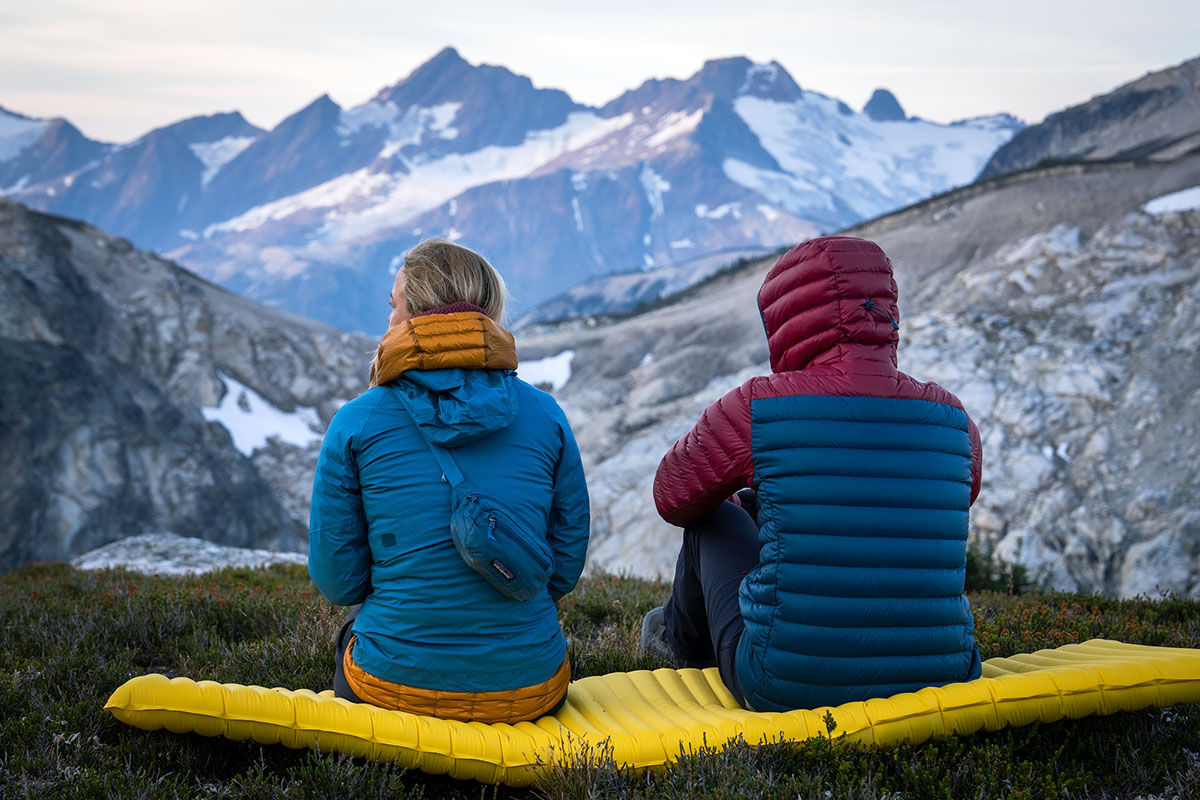
The fanny packs above are built for everyday and light outdoor use, but there are also plenty of more specialized designs made for running, fishing, biking, and more. Dakine is a longstanding leader in the mountain biking realm with a wide selection of packs that are purpose-built for cyclists, including their popular Hot Laps collection. Runners typically opt for minimalist, belt-style designs like the Amphipod AirFlow MicroStretch Plus or FlipBelt Classic to keep weight and bulk to a minimum while logging miles. Finally, Patagonia’s Guidewater Hip Pack 9L is a popular option among fly fishermen for its fully waterproof and submersible design, external lash points for securing extra gear, and pass-through sleeve that can fit a net.
A final category worth having on your radar is hydration-equipped fanny packs, which are typically aimed at hikers, mountain bikers, and trail or mountain runners. Our favorite is CamelBak’s M.U.L.E. 5 above, which comes with a quality 1.5-liter Crux reservoir and crosses over nicely for both hiking and biking. Osprey also has a healthy selection of singletrack-ready designs, including the reservoir-equipped Seral 4. Alternatively, many running-focused designs include small bottles rather than bladders, including Nathan’s Peak Hydration Waist Pack and UltrAspire’s Speedgoat 3.0. Finally, there are several larger and more feature-rich options for all-day adventures—from long bike rides to ultralight mountain missions—like Ultimate Direction’s Mountain Belt 5.0 and Mountainsmith’s Cona 4. None of these cross over particularly well for daily wear, but they make a lot of sense for athletes looking for a vest or pack alternative.
Back to Our Top Fanny Pack Picks Back to Our Fanny Pack Comparison Table